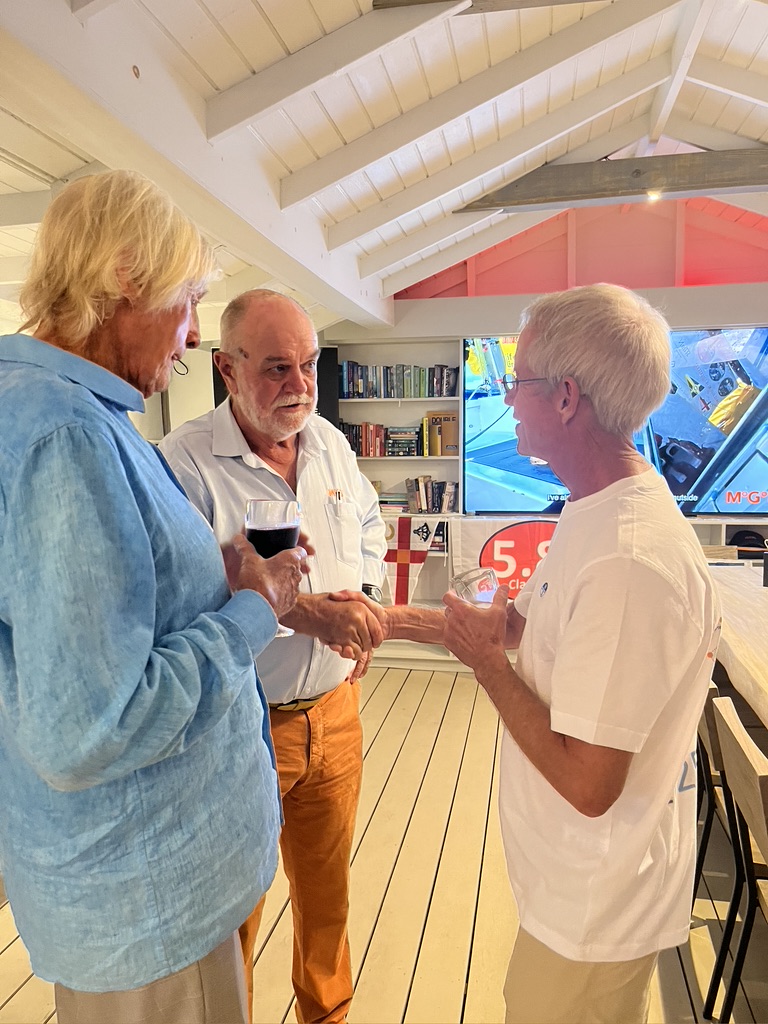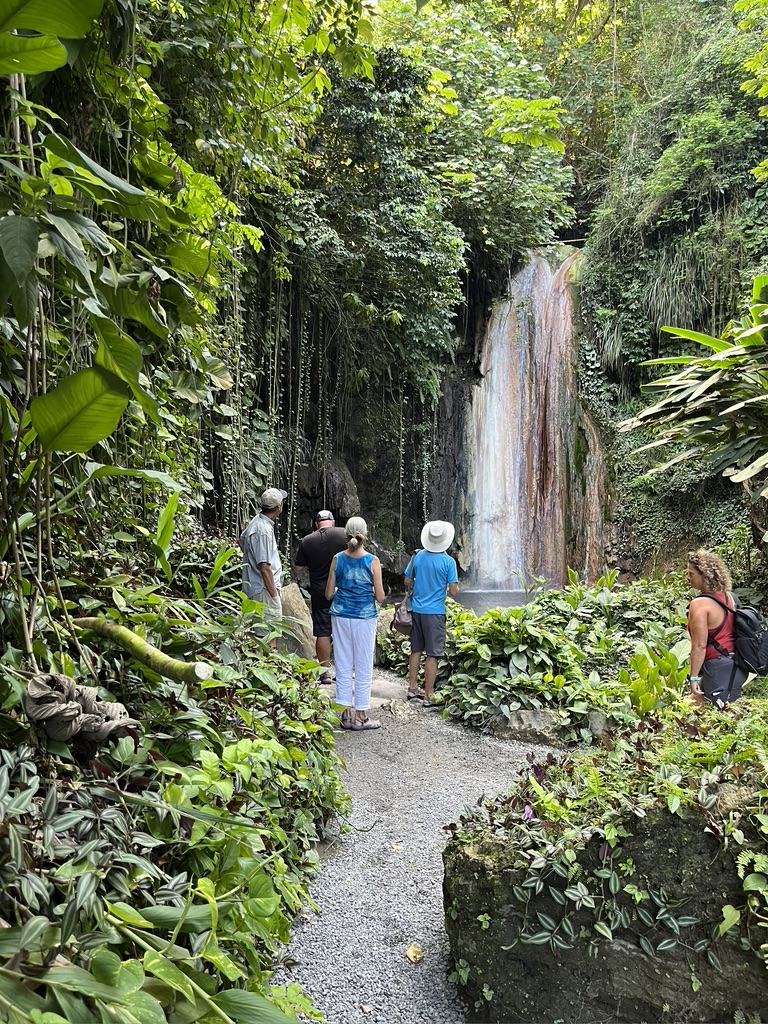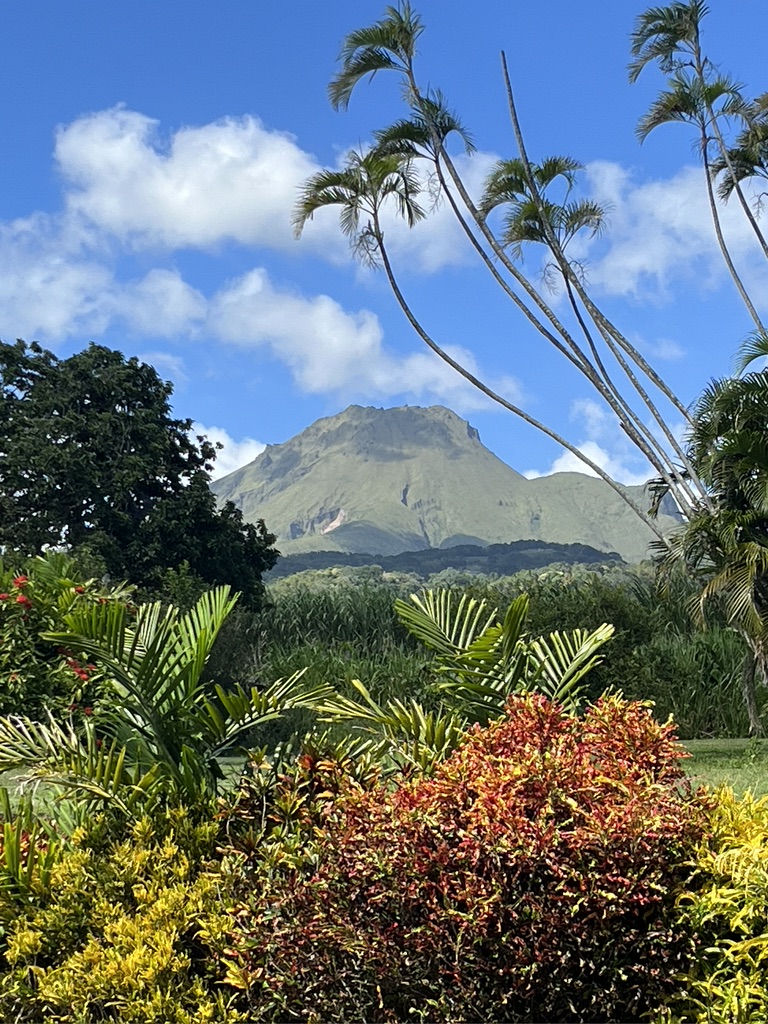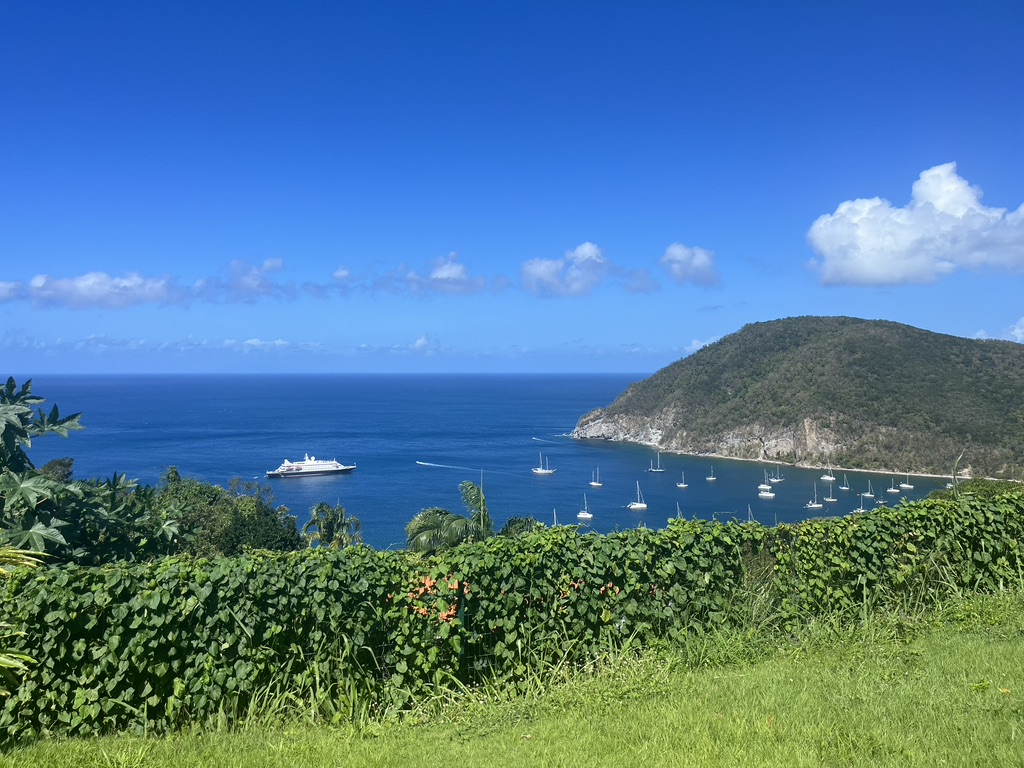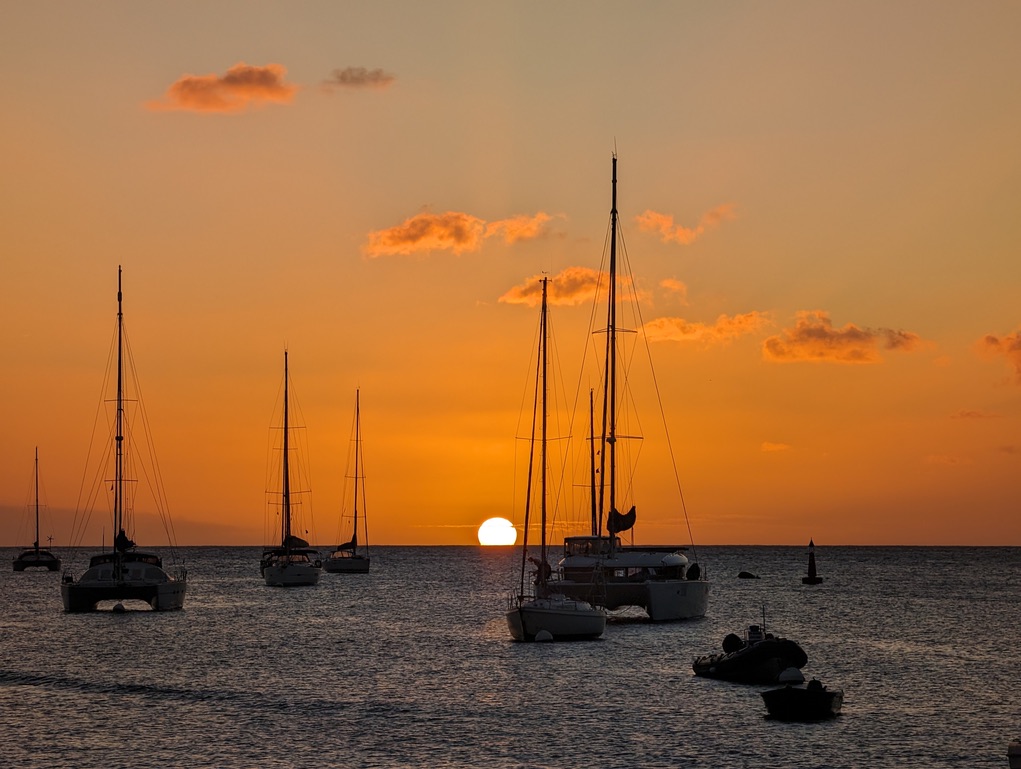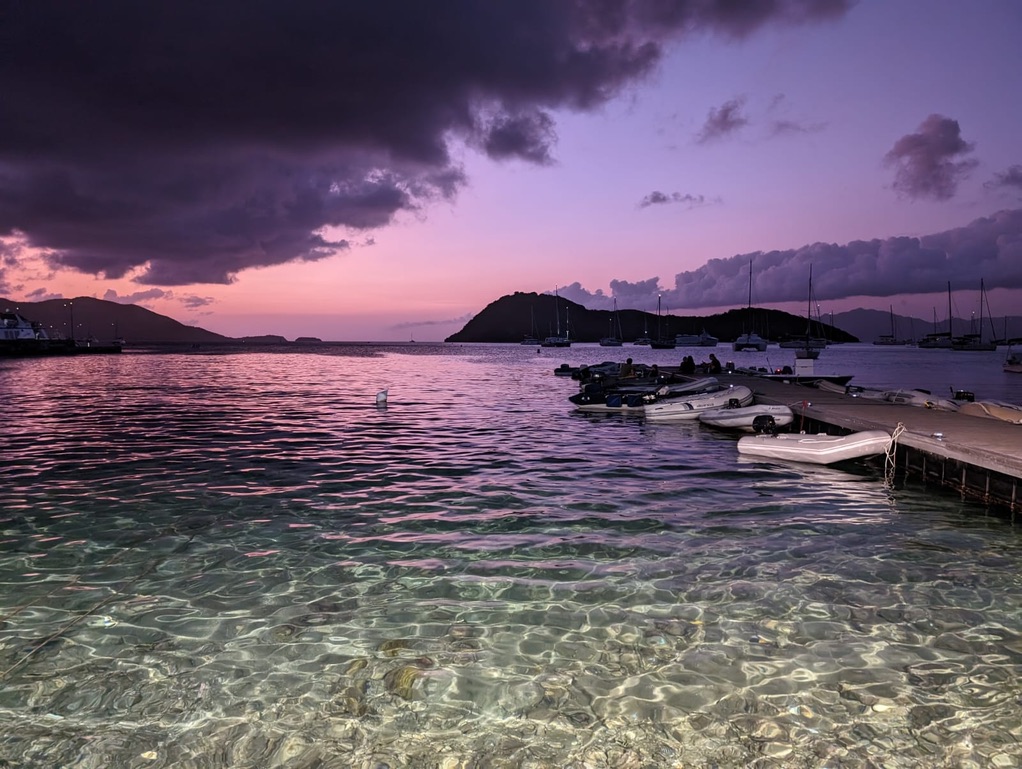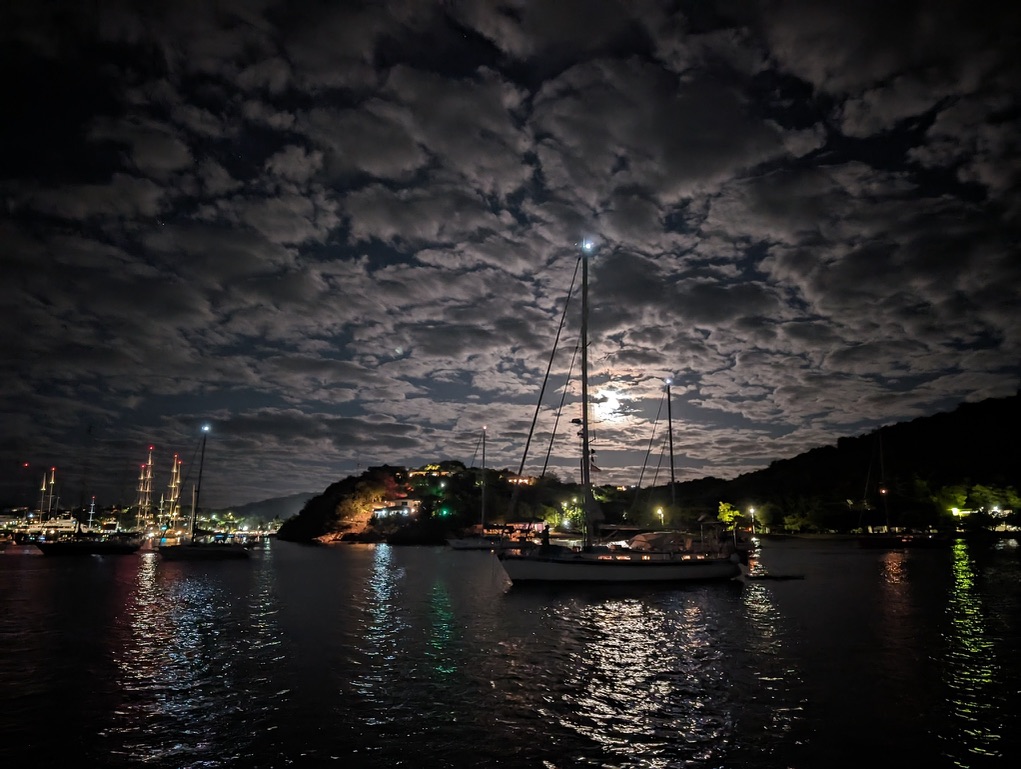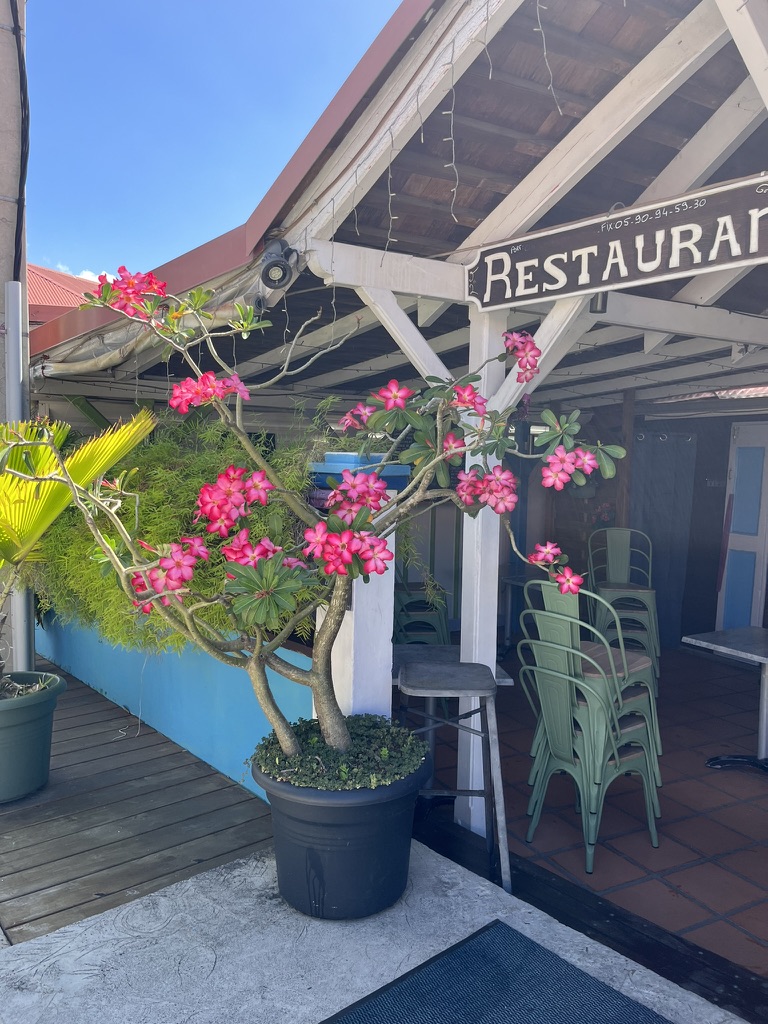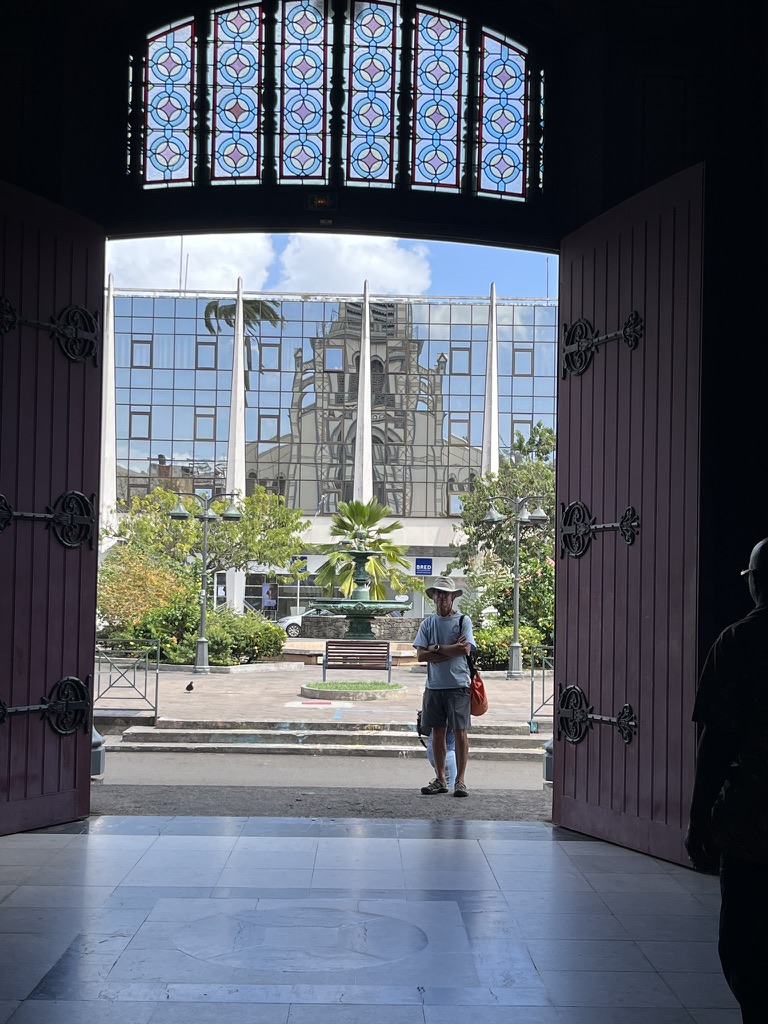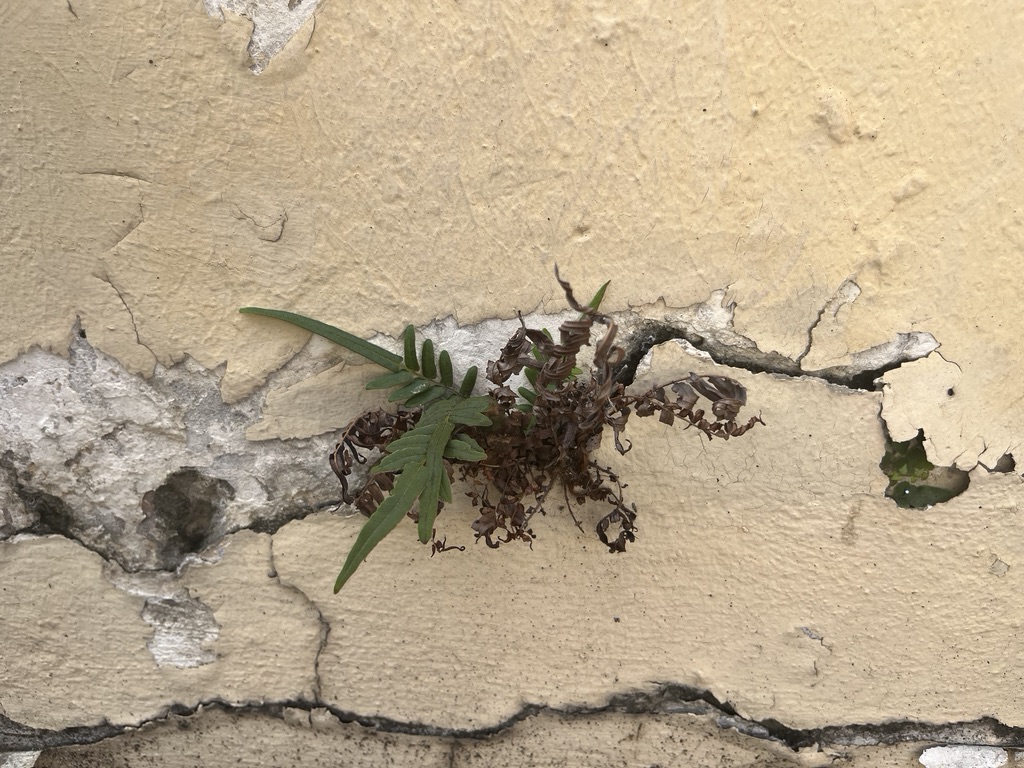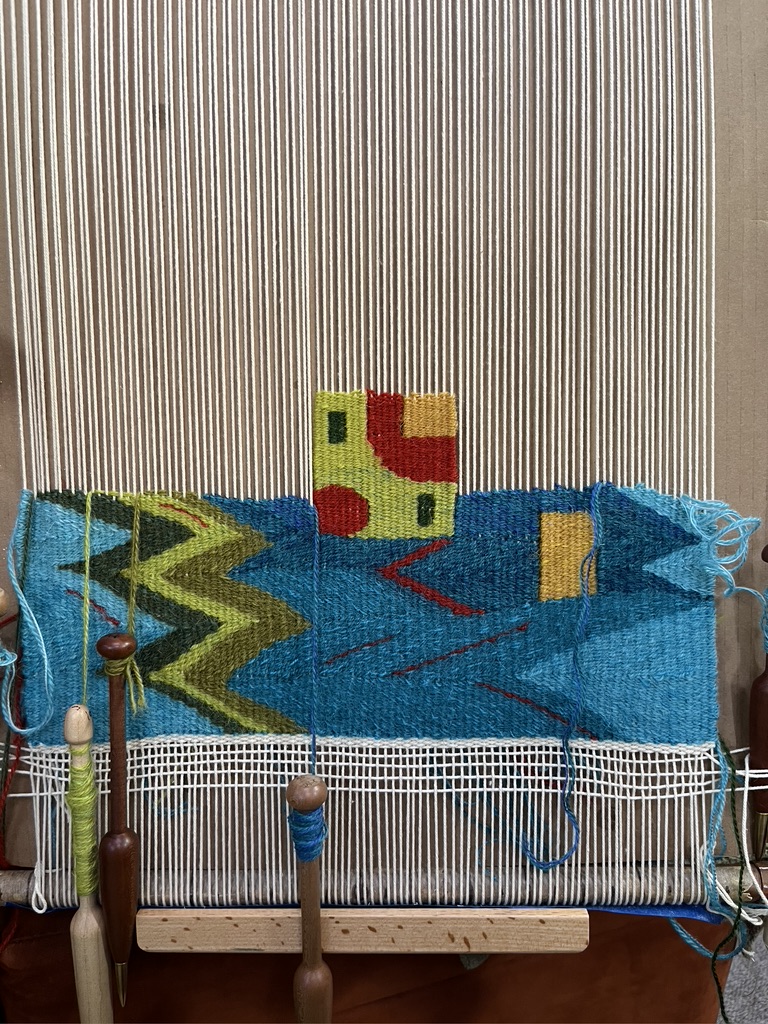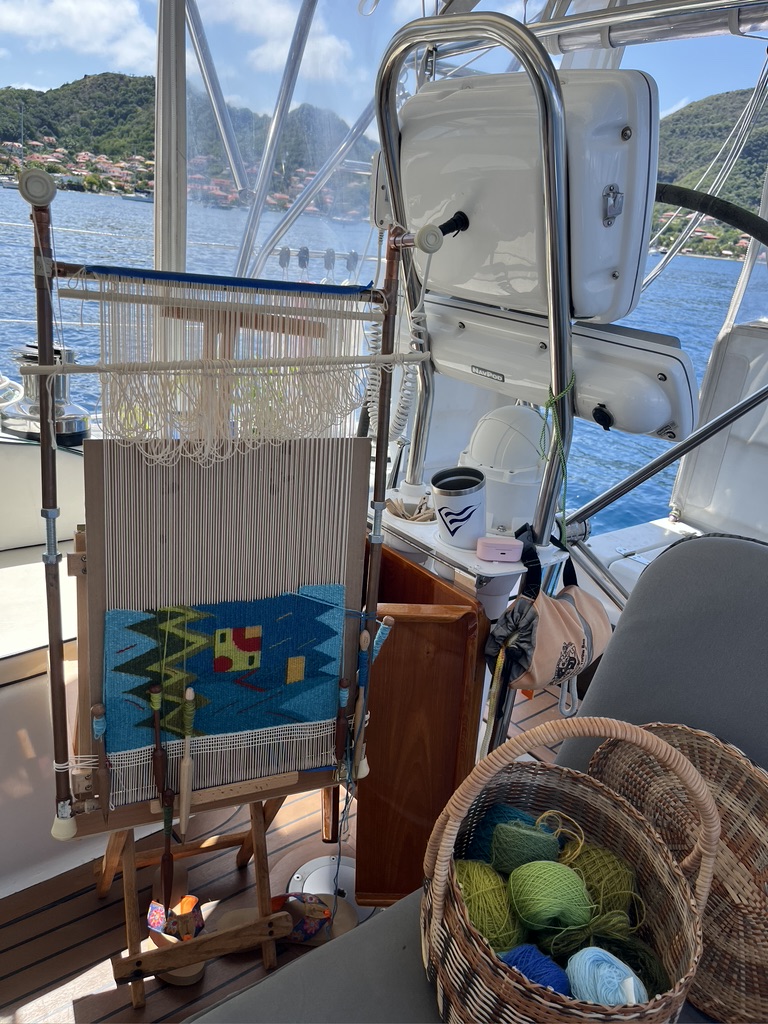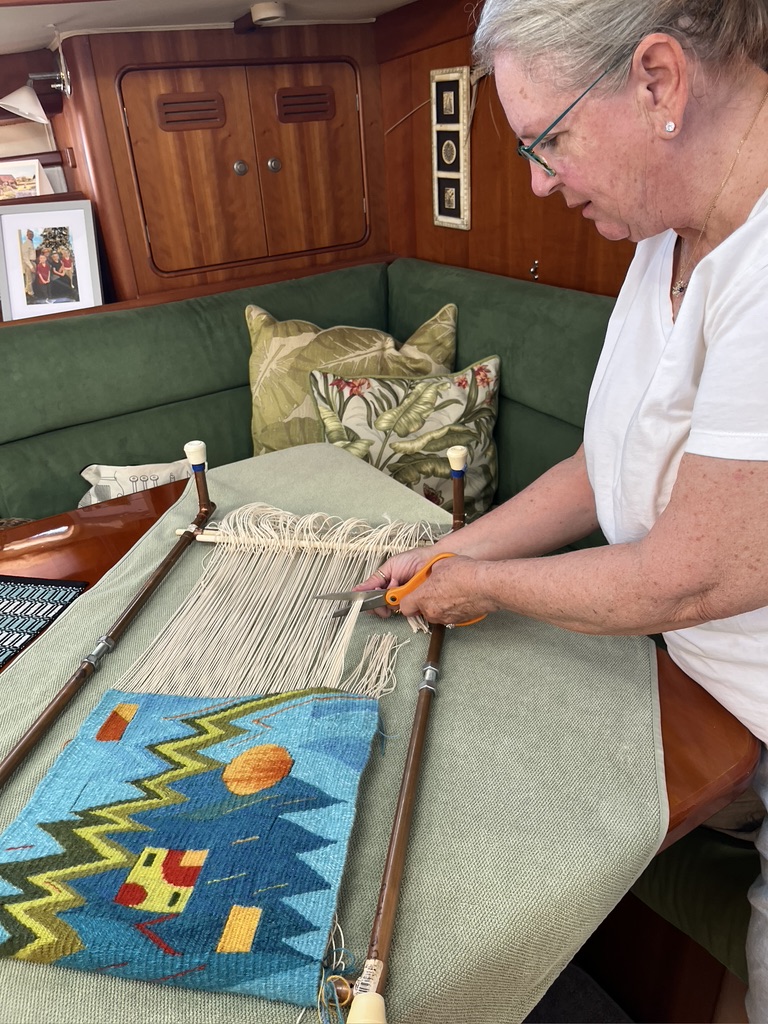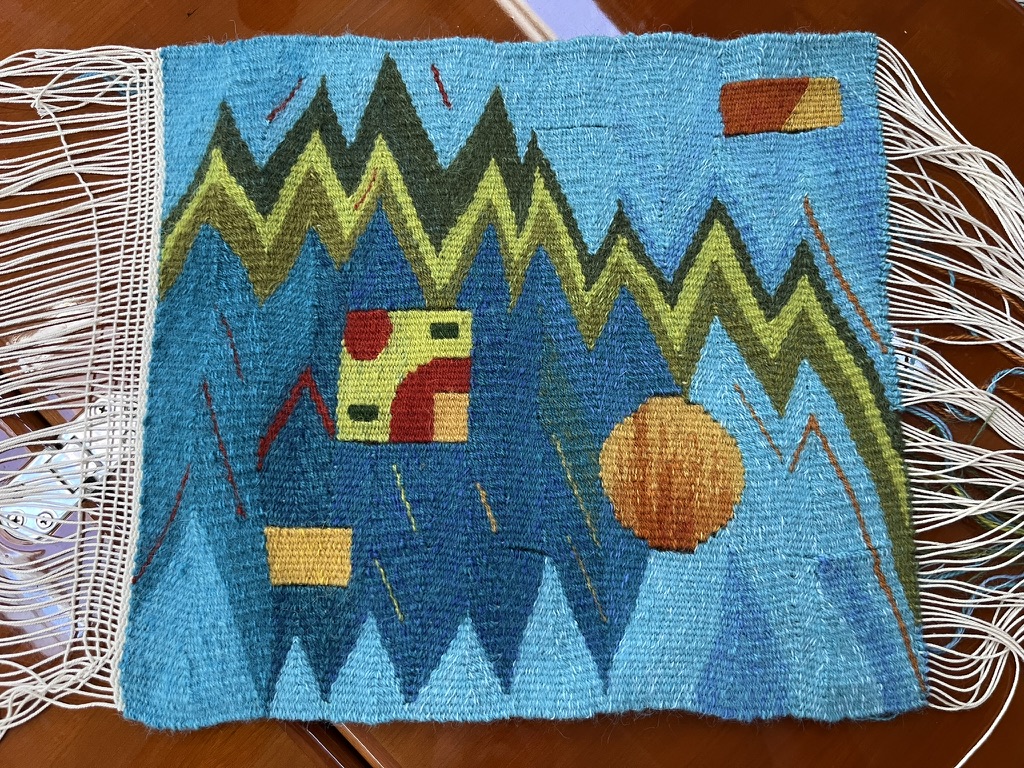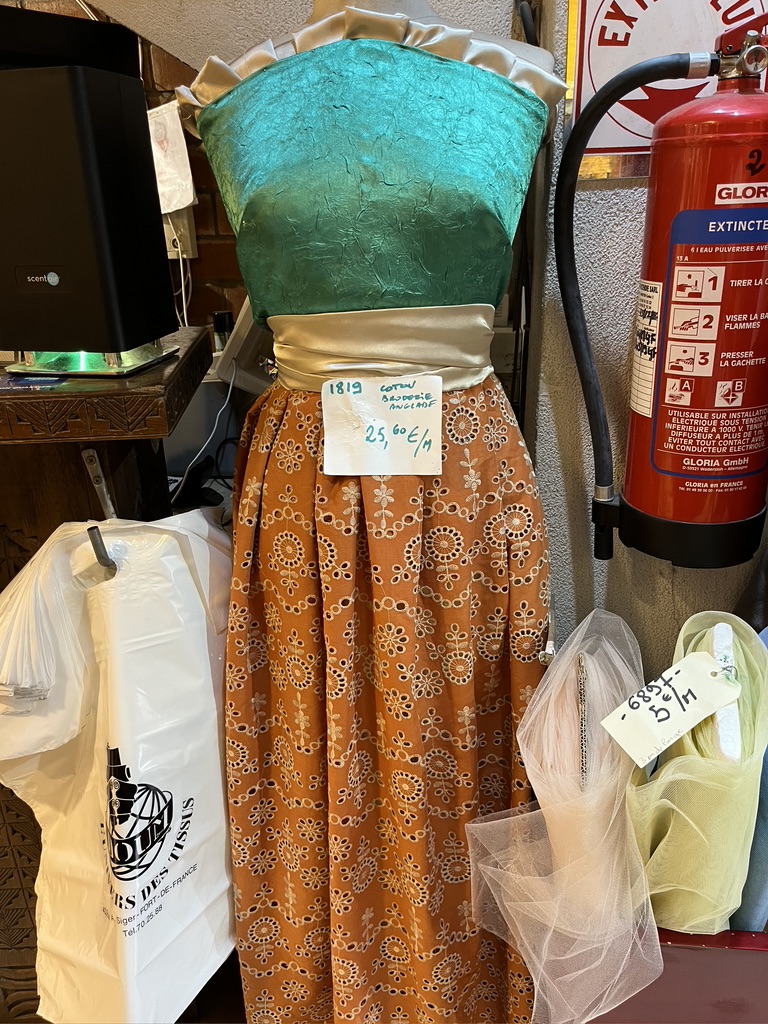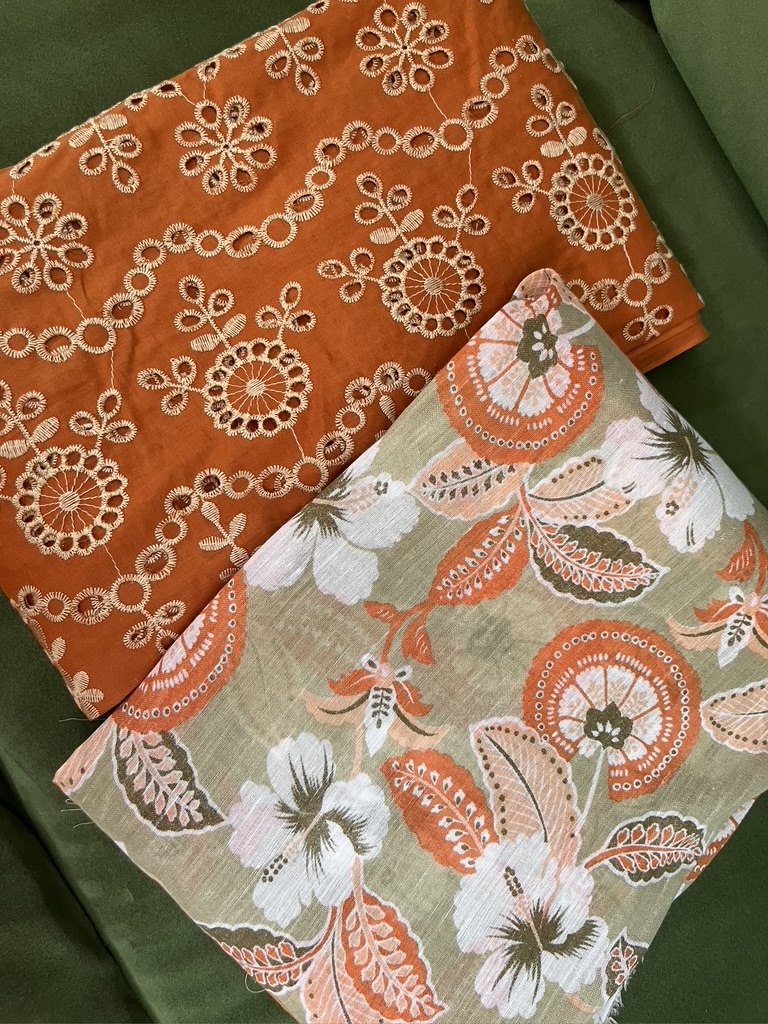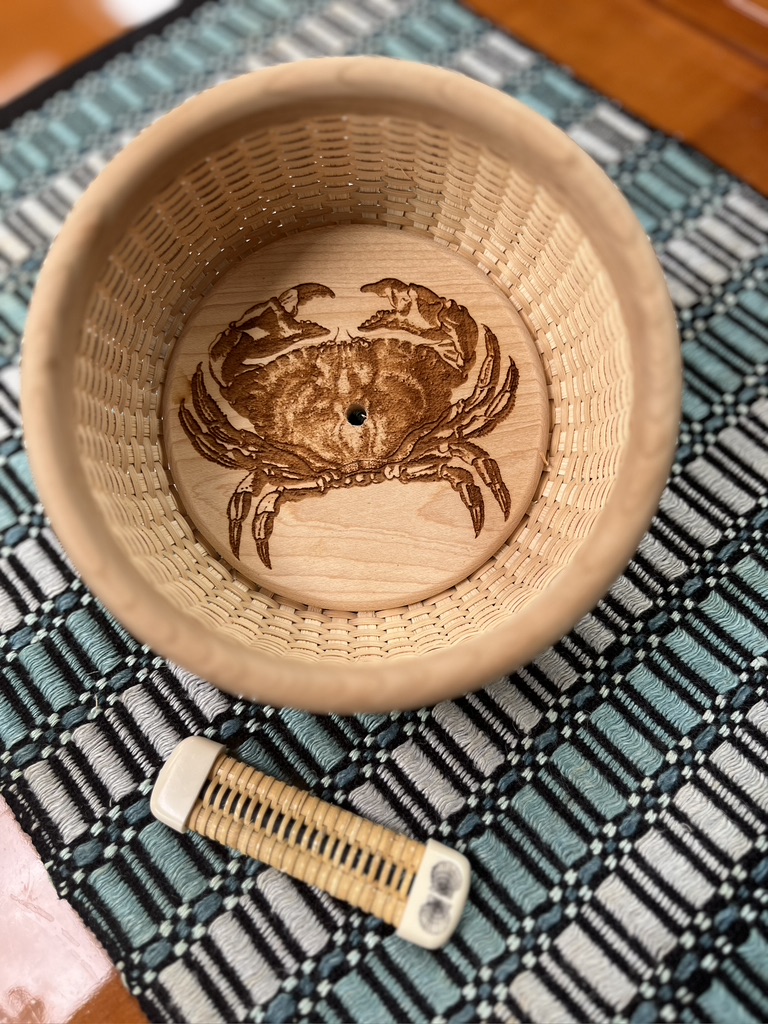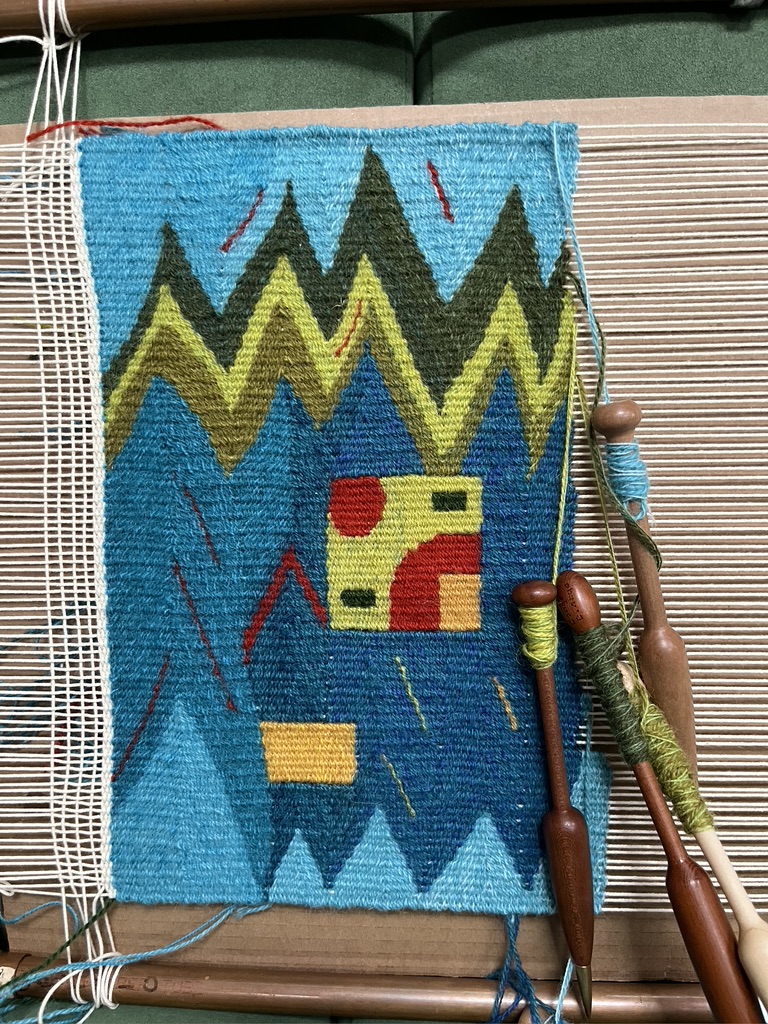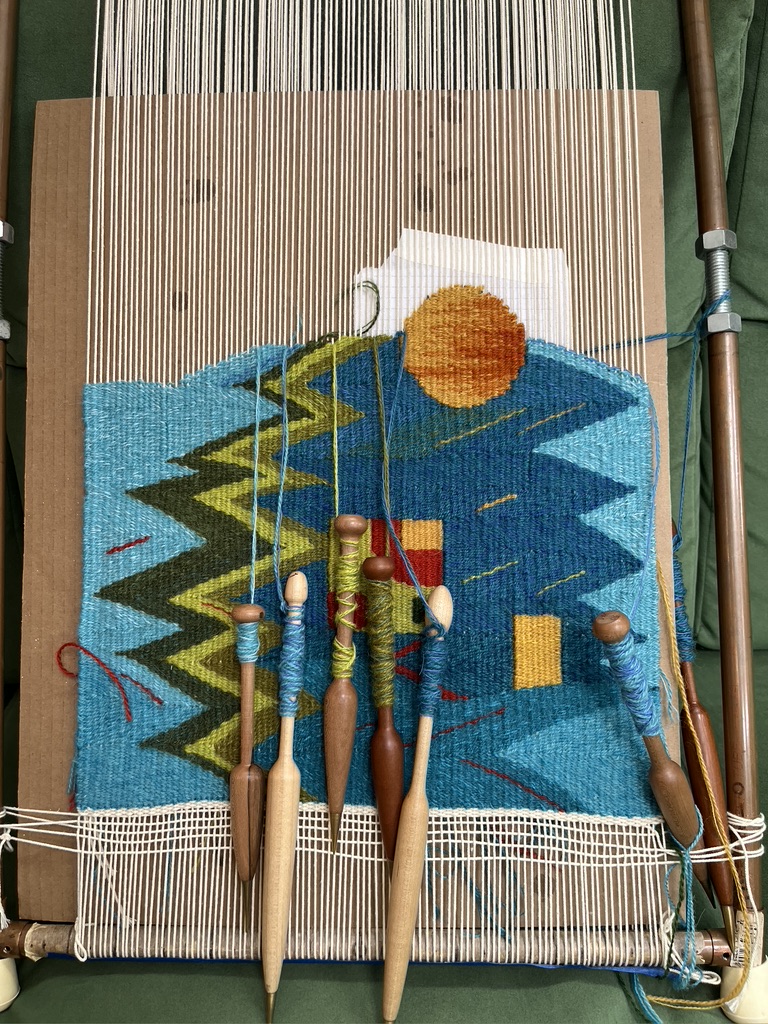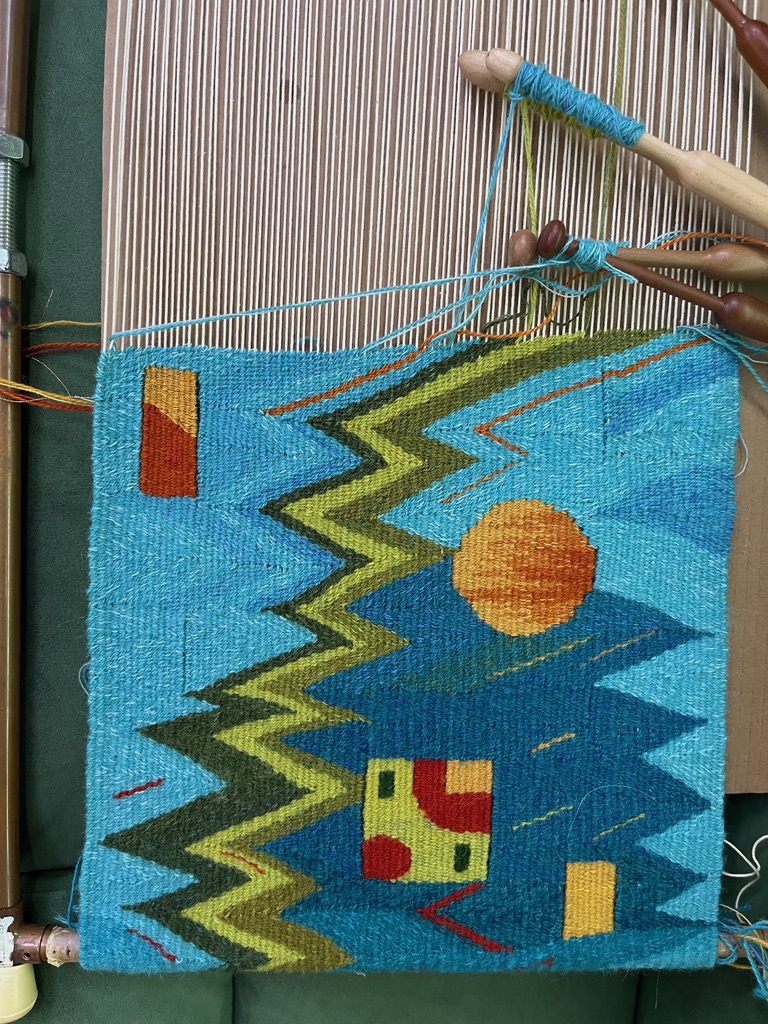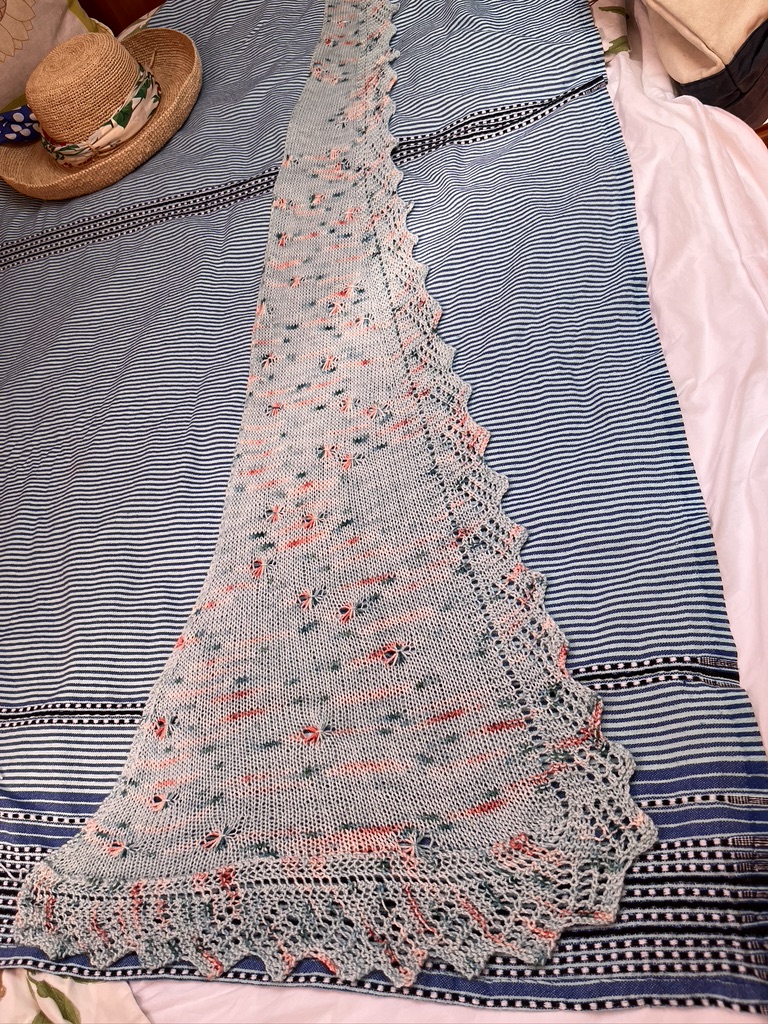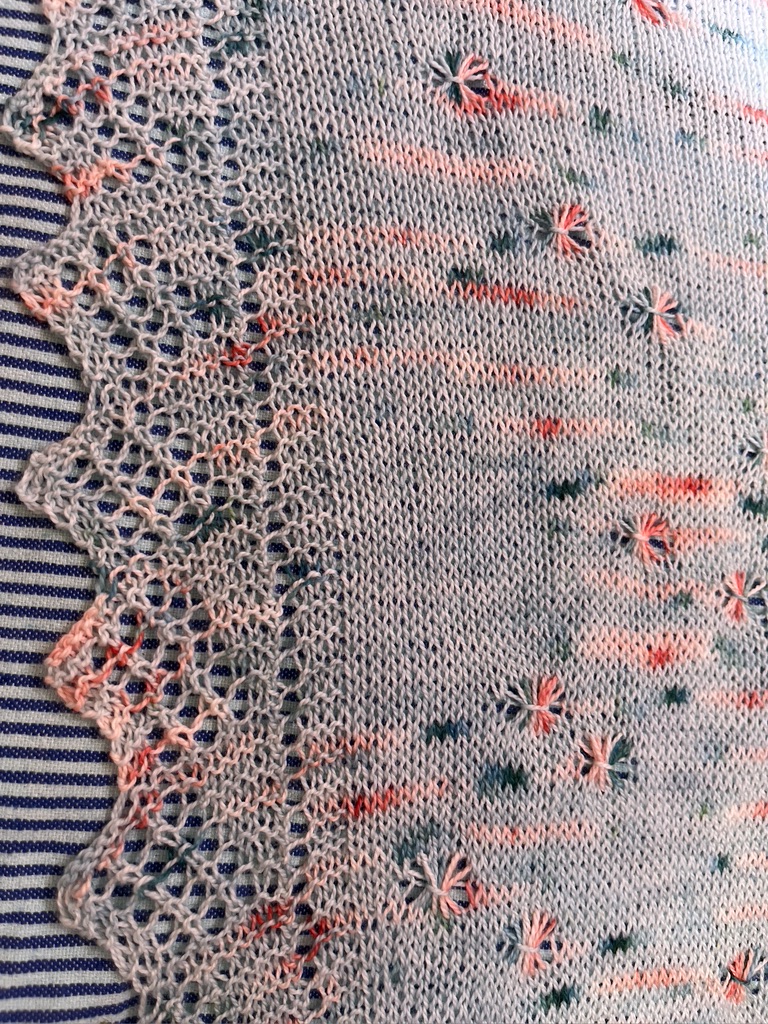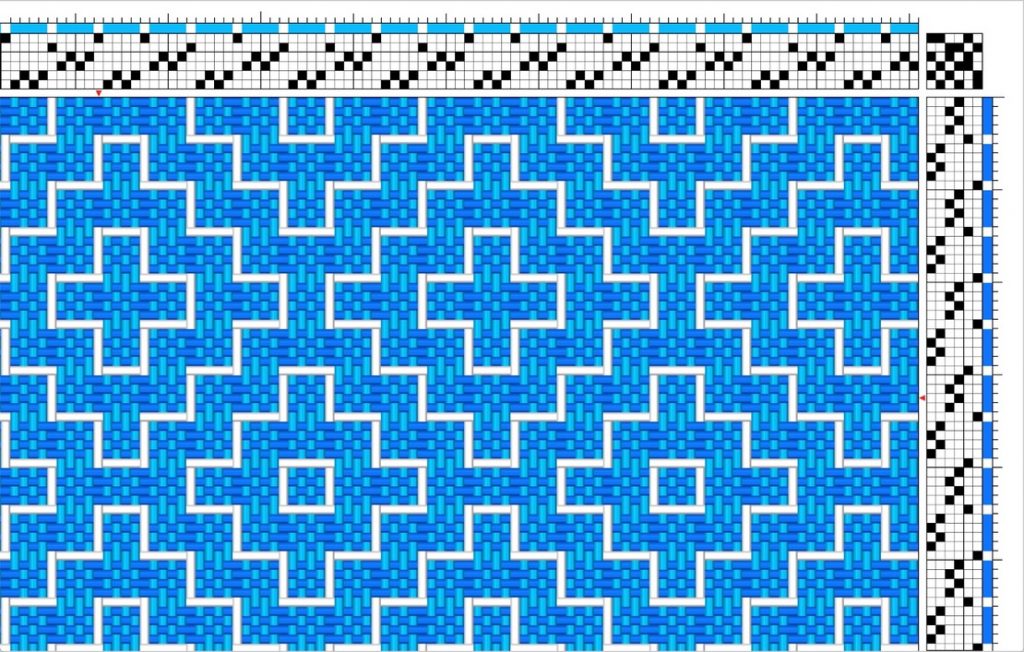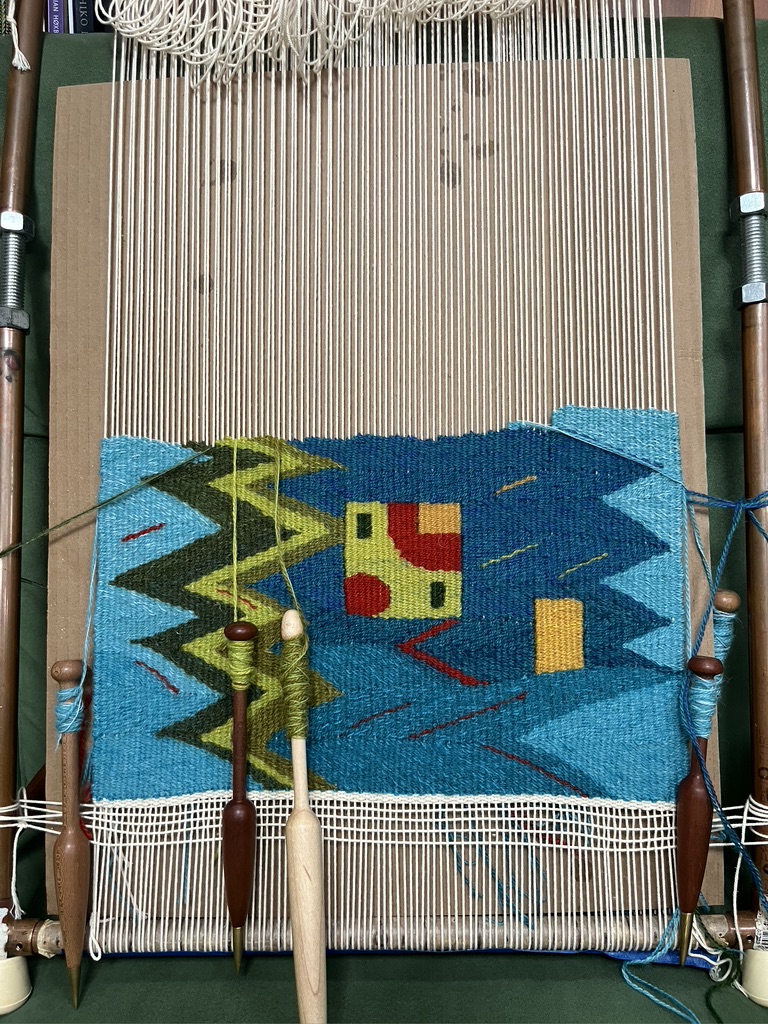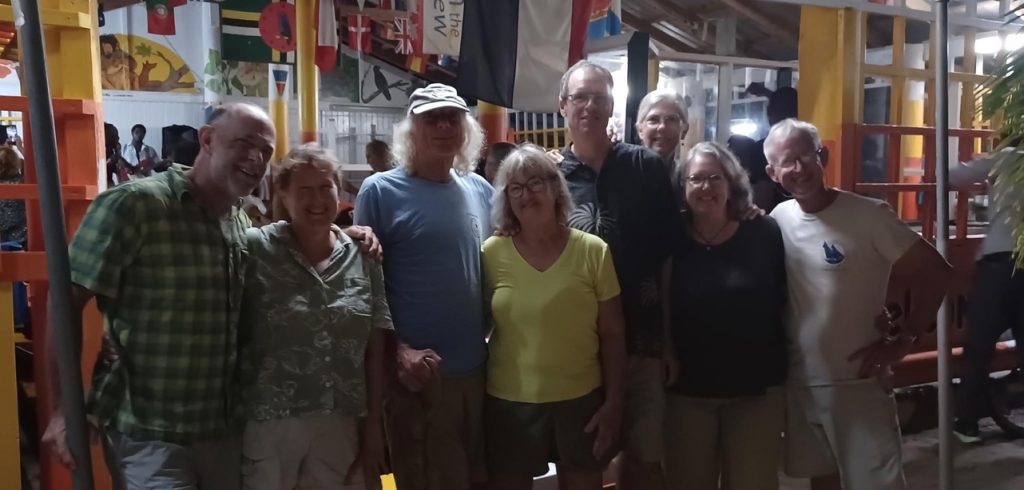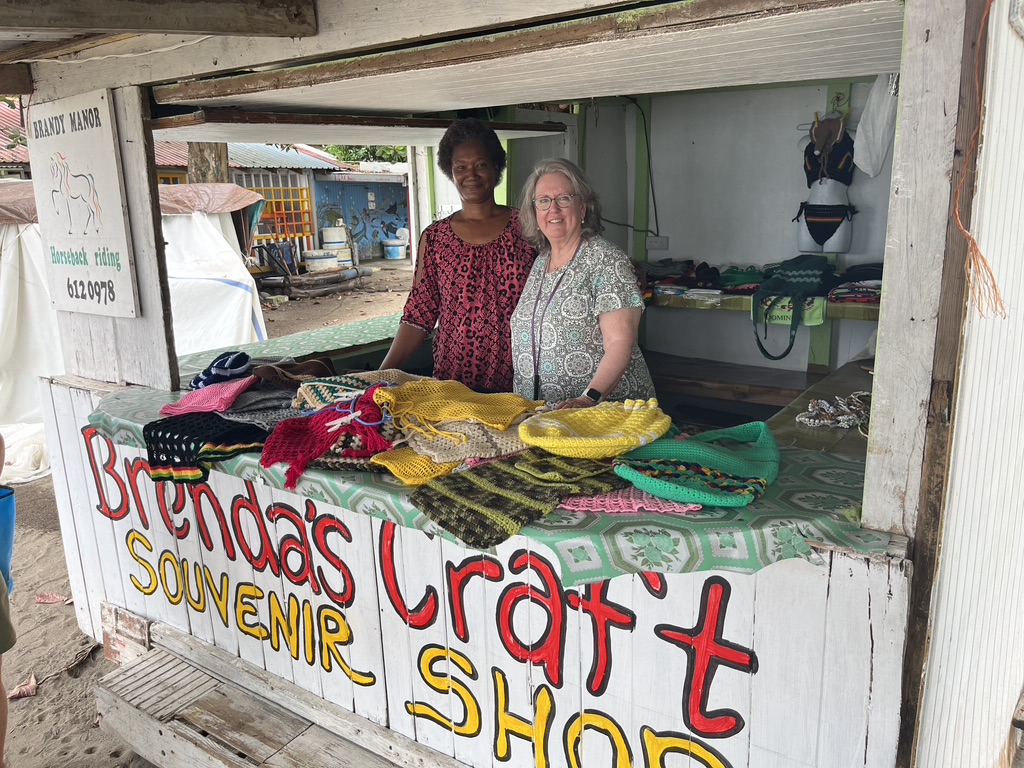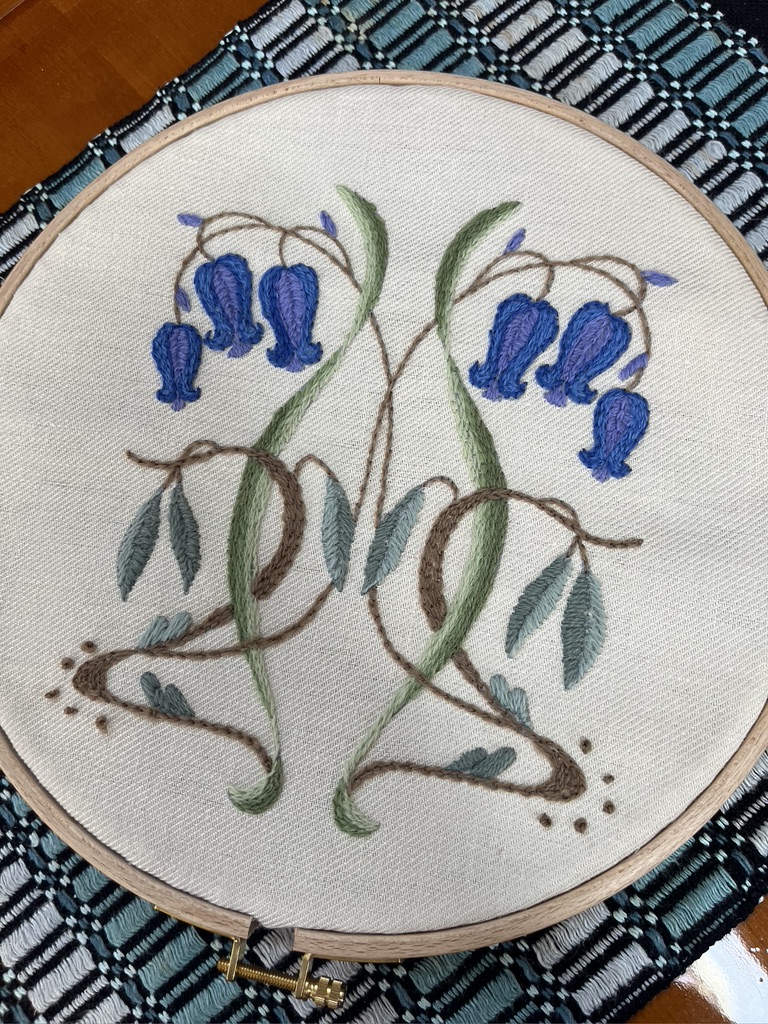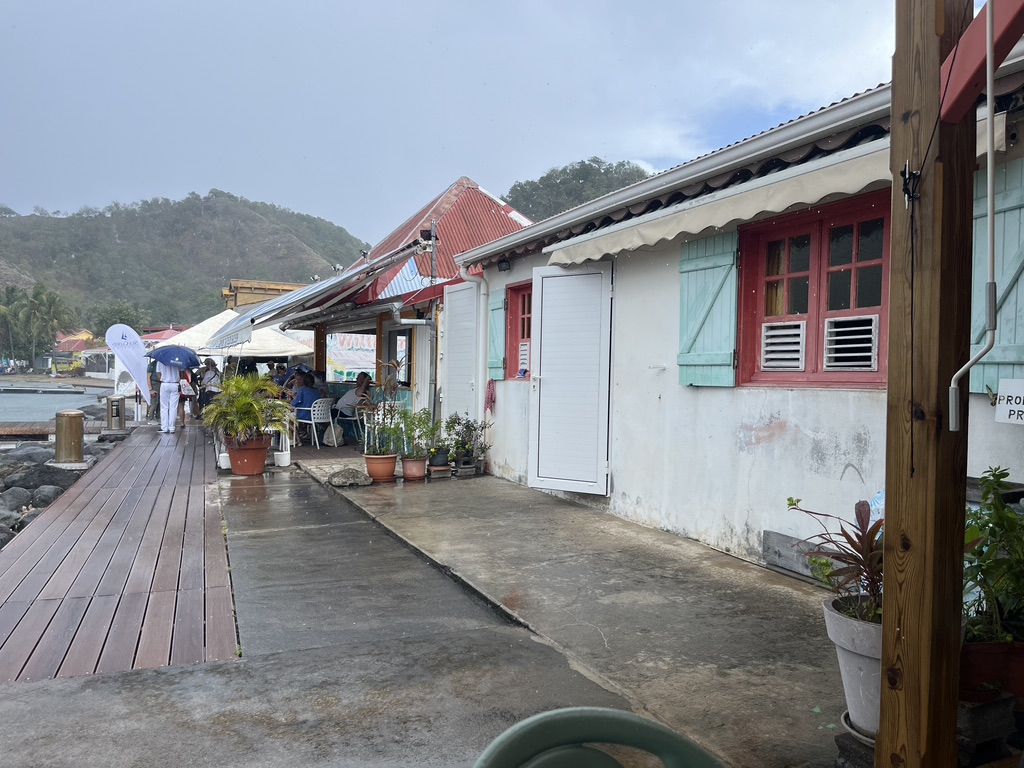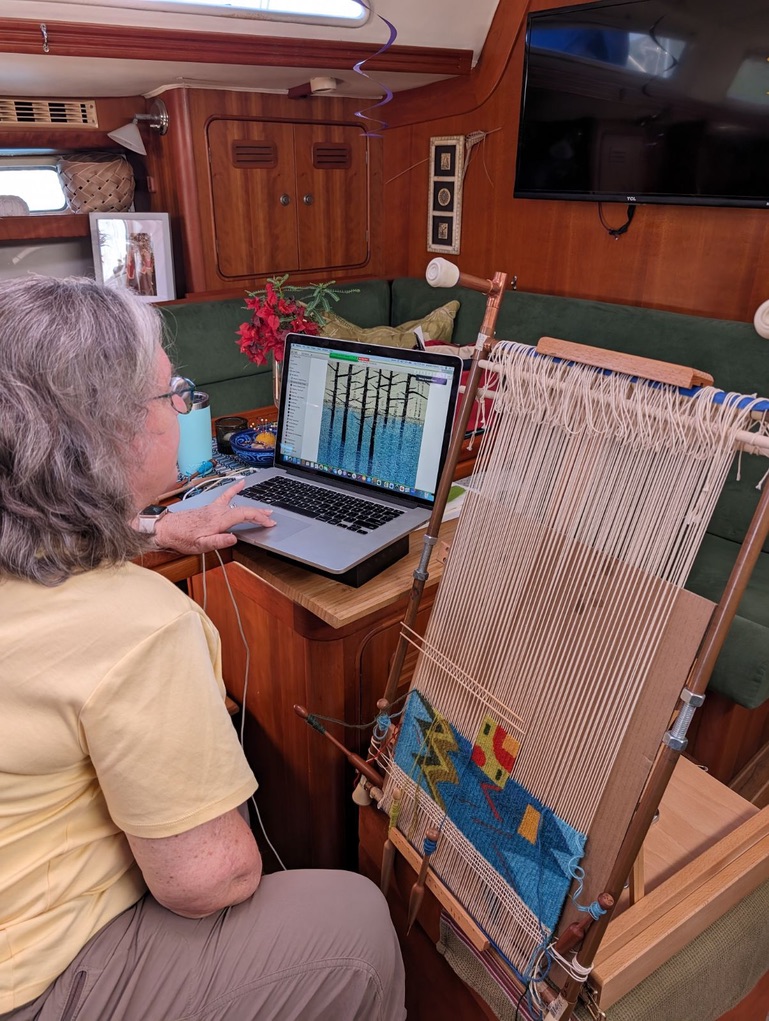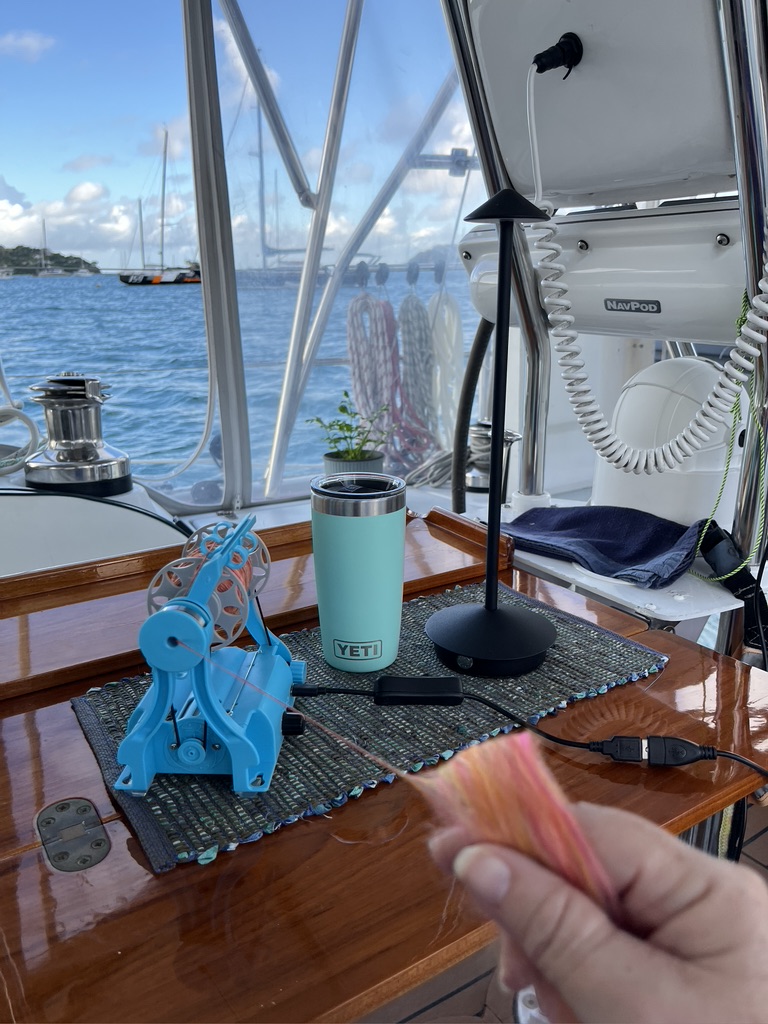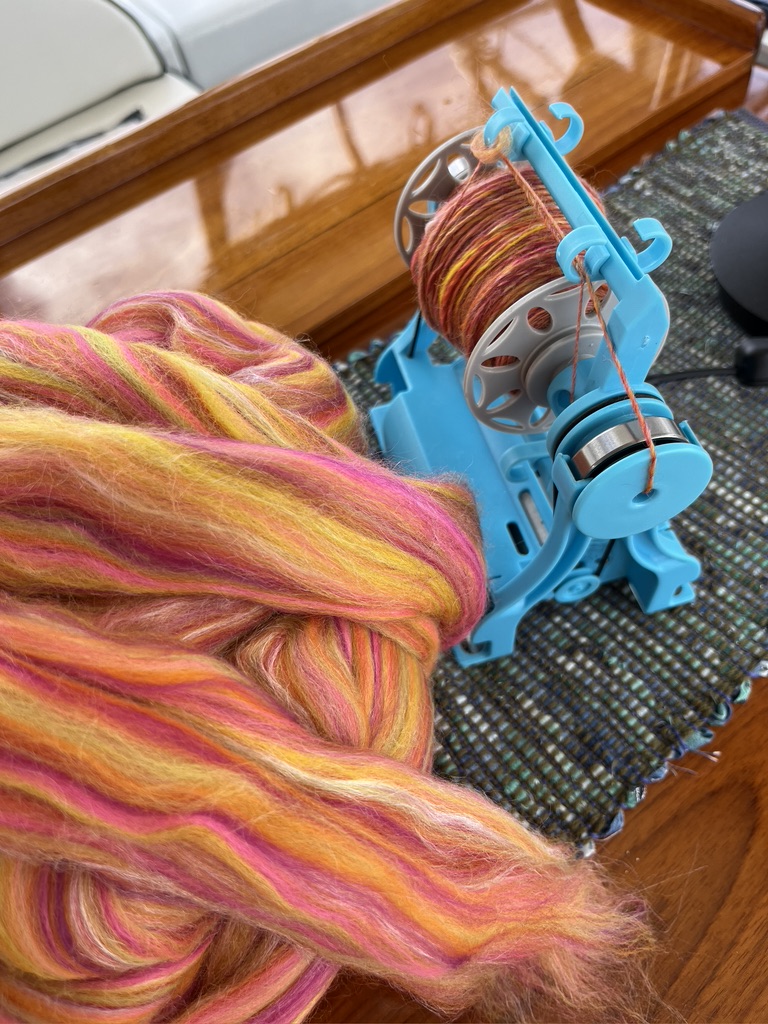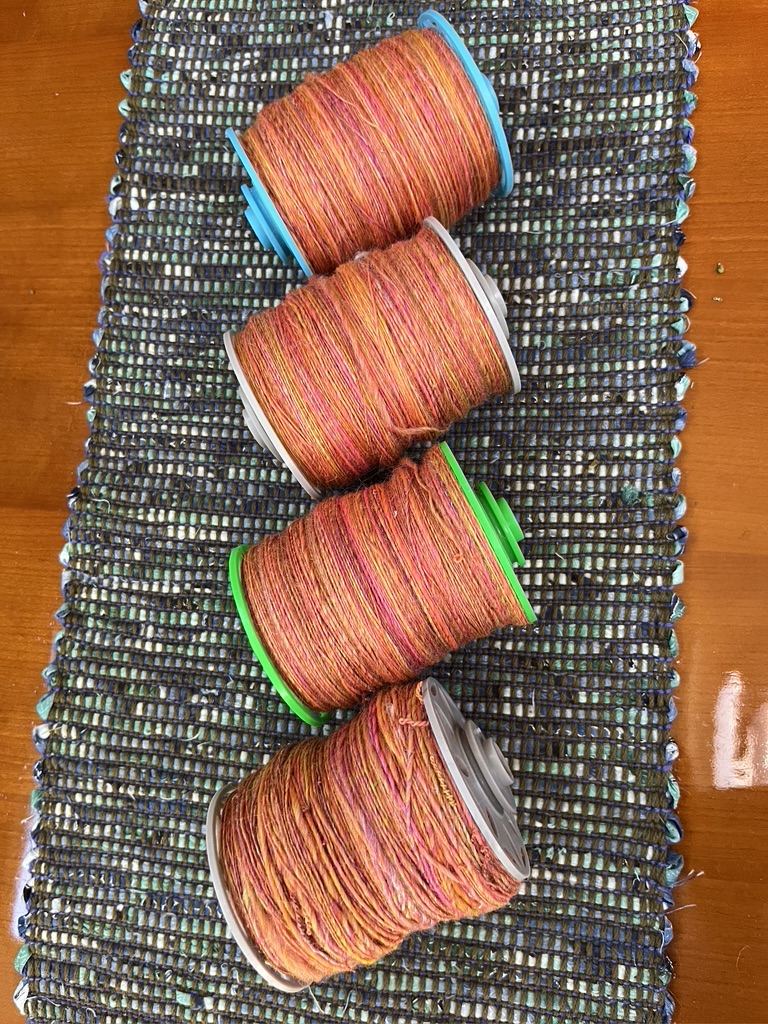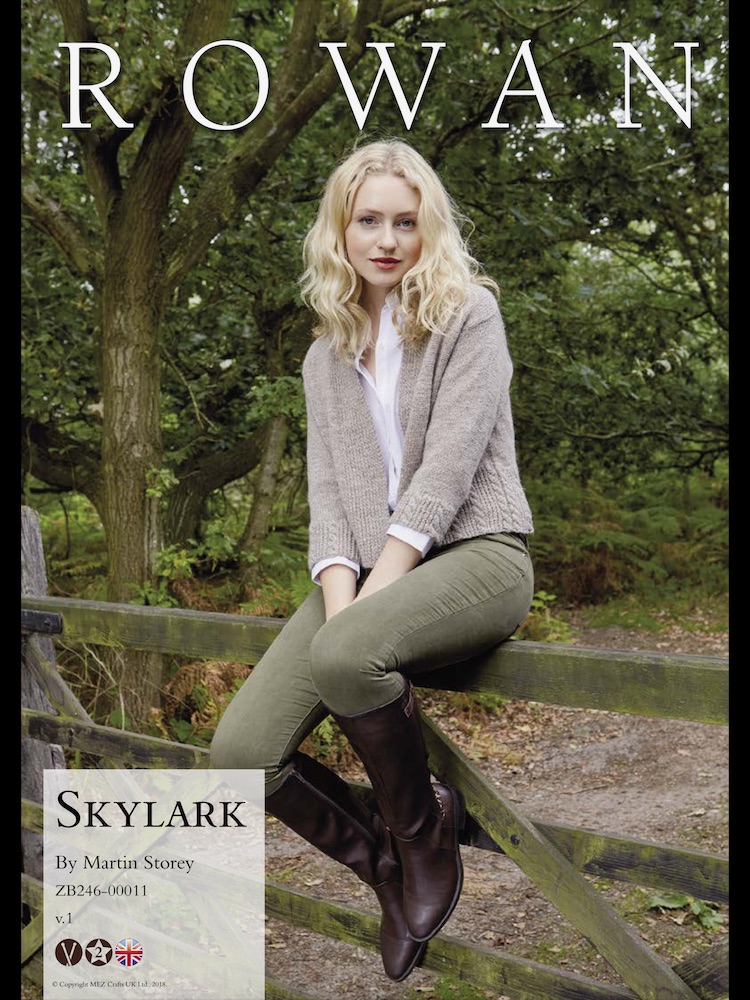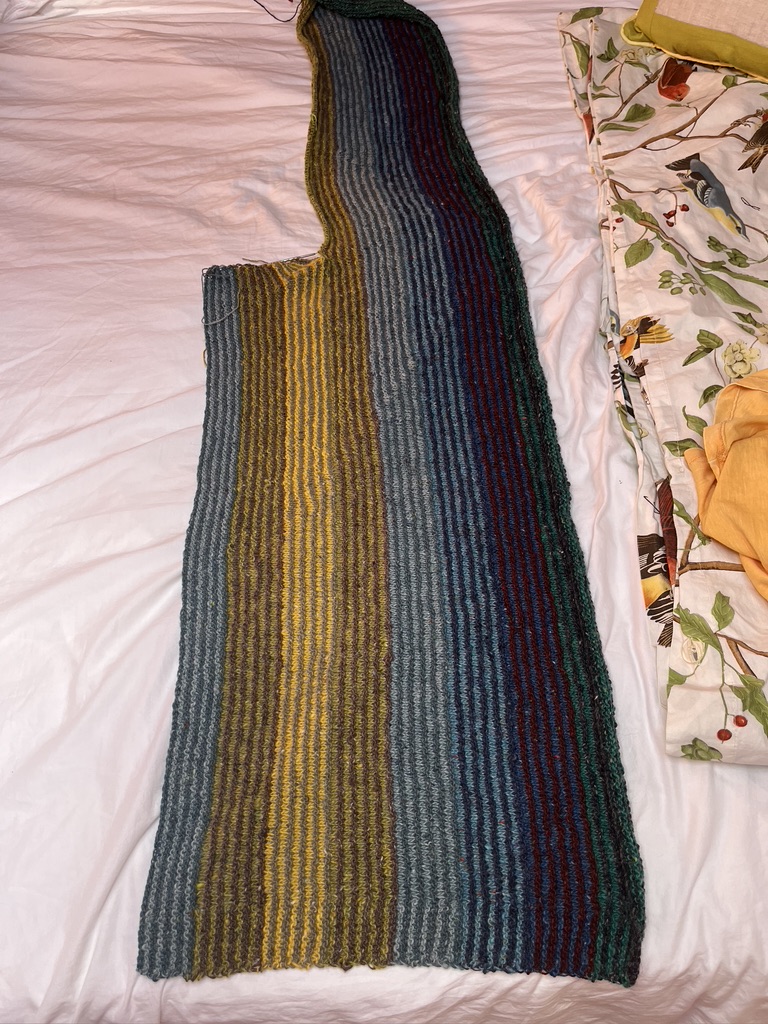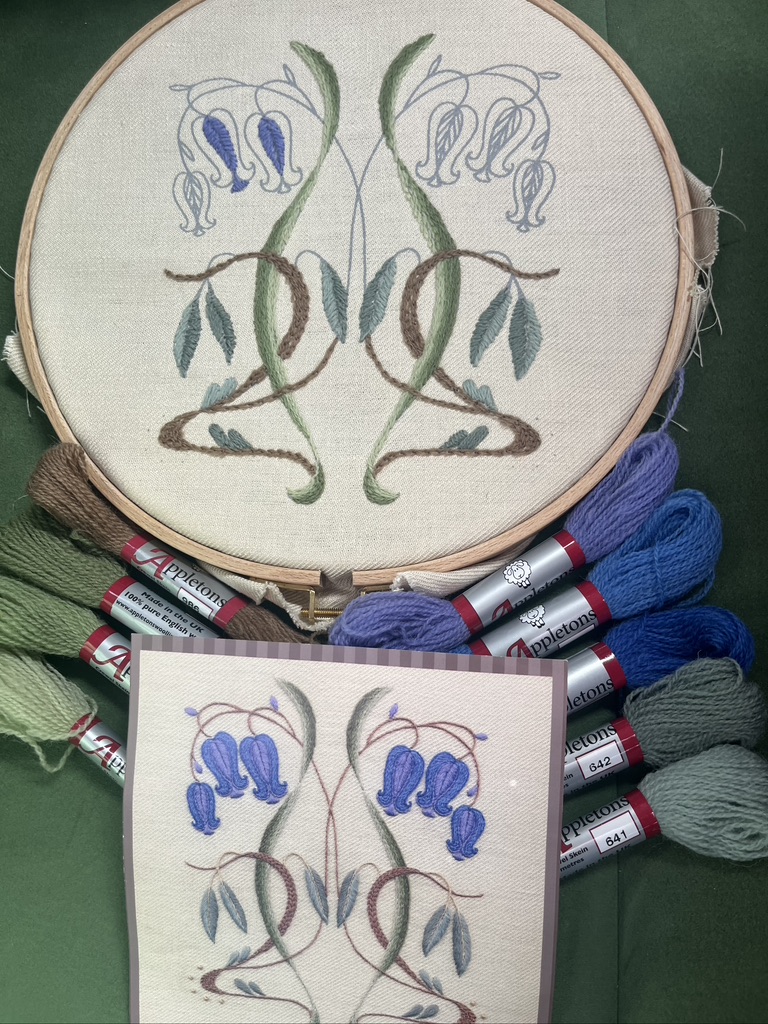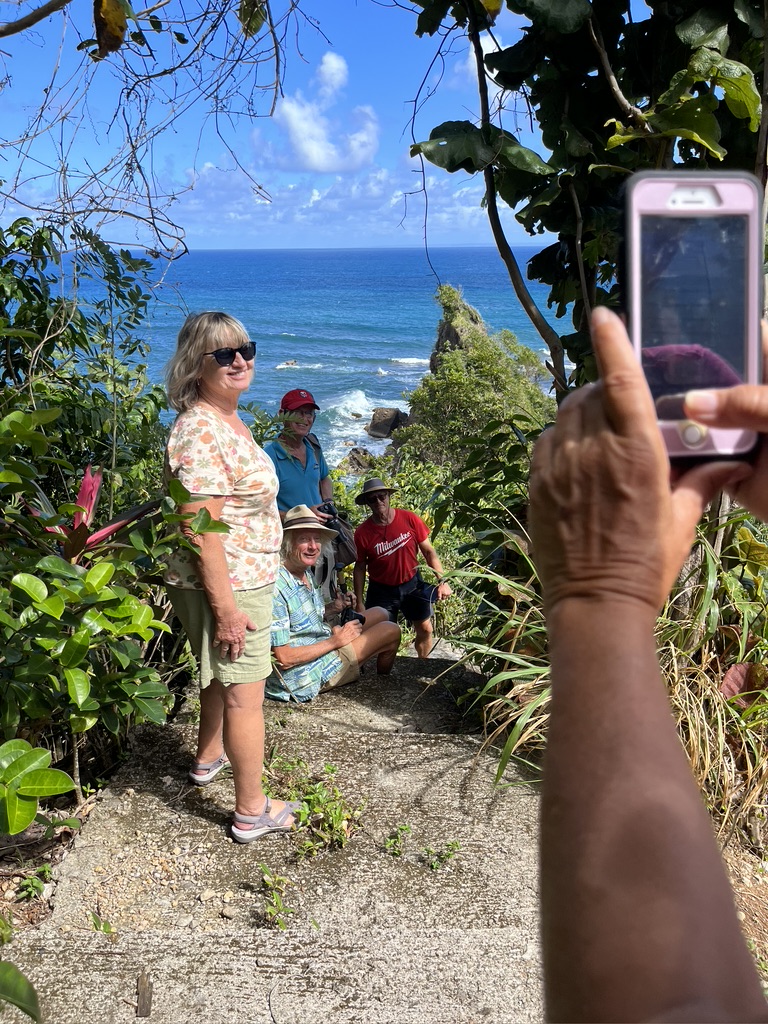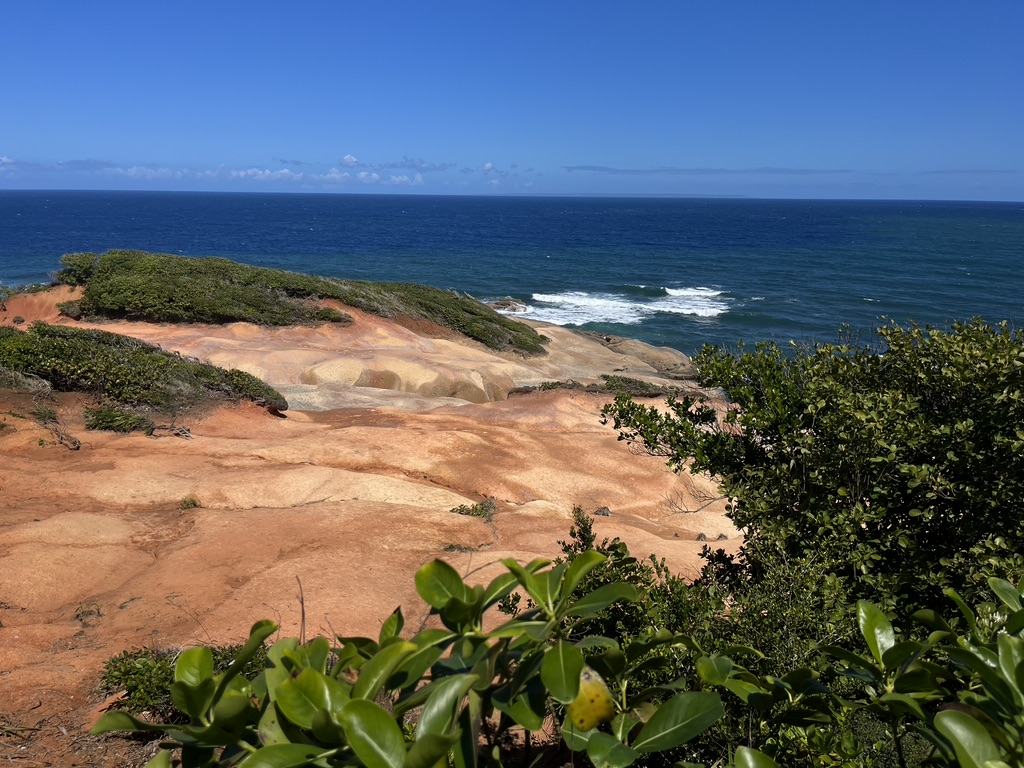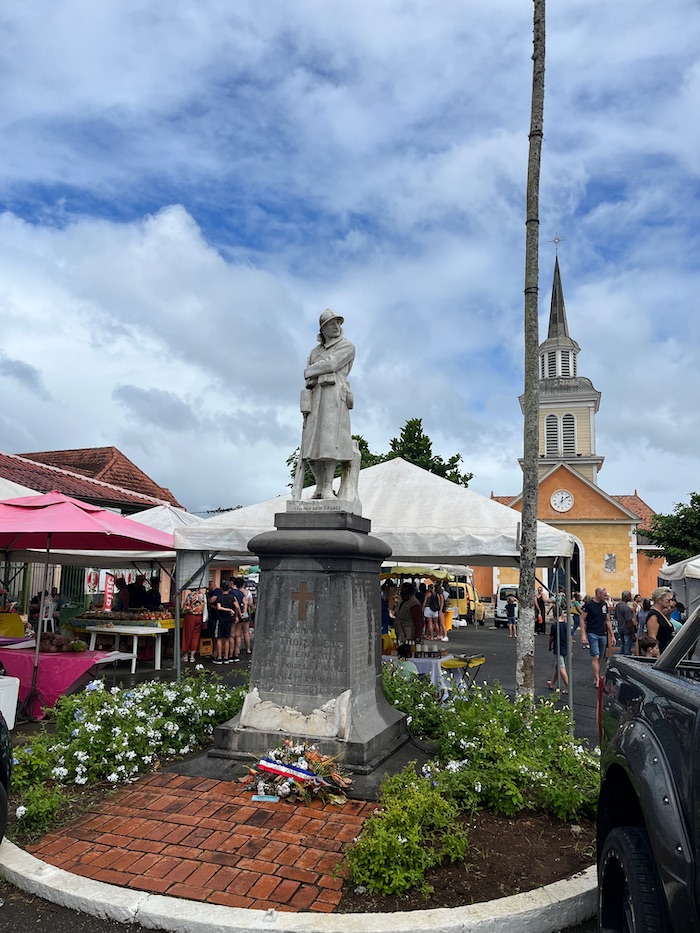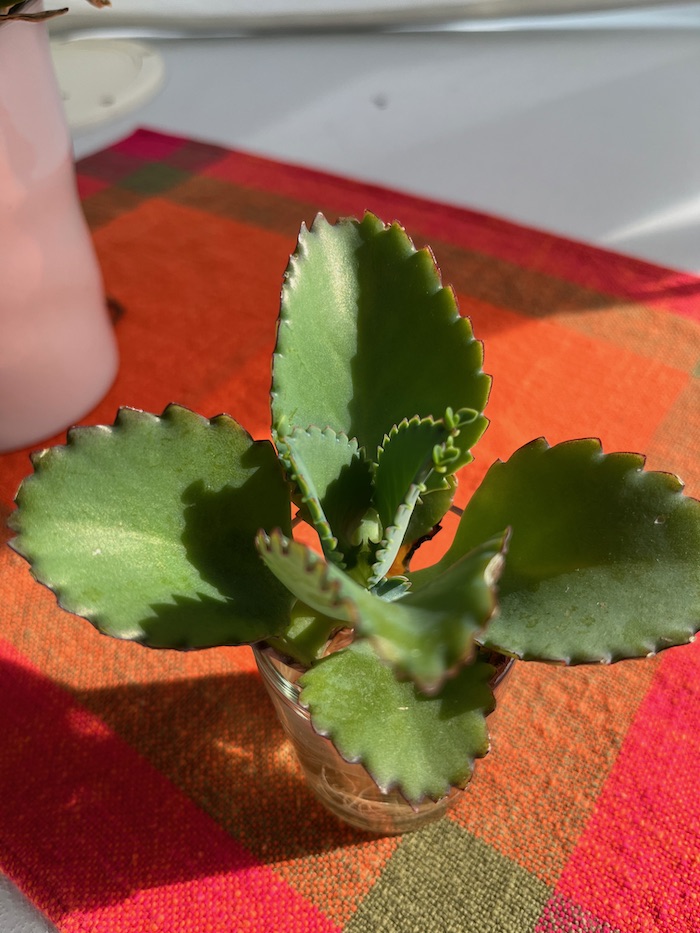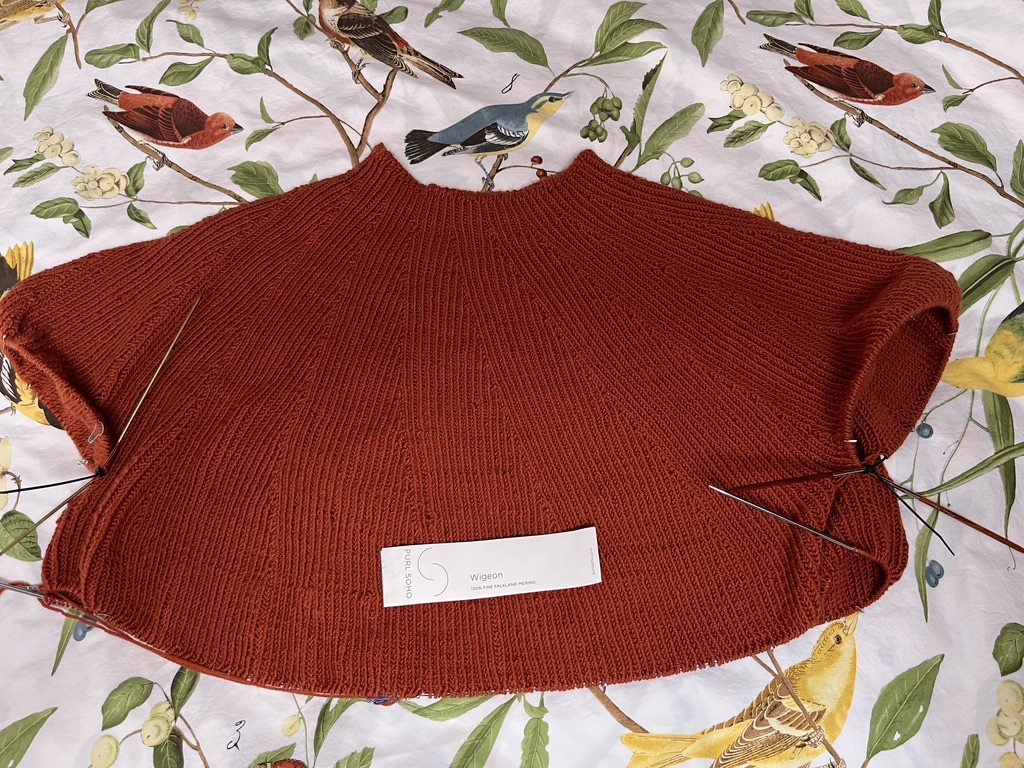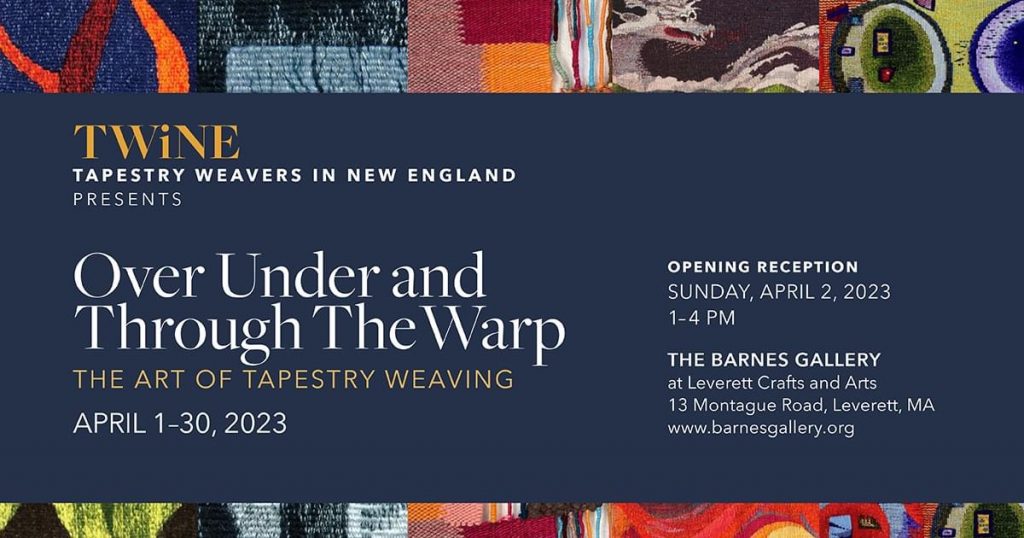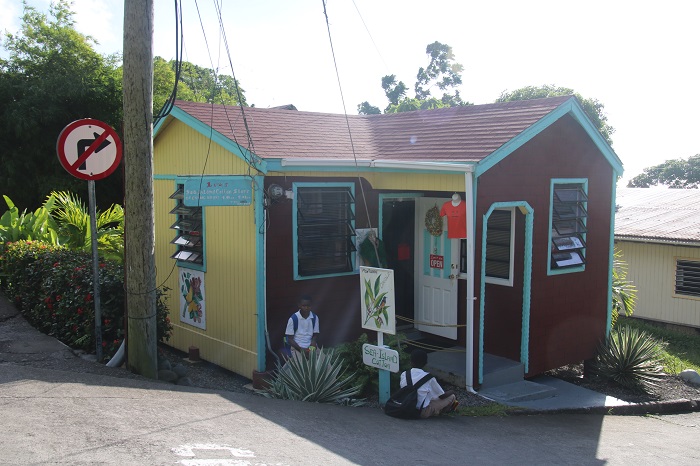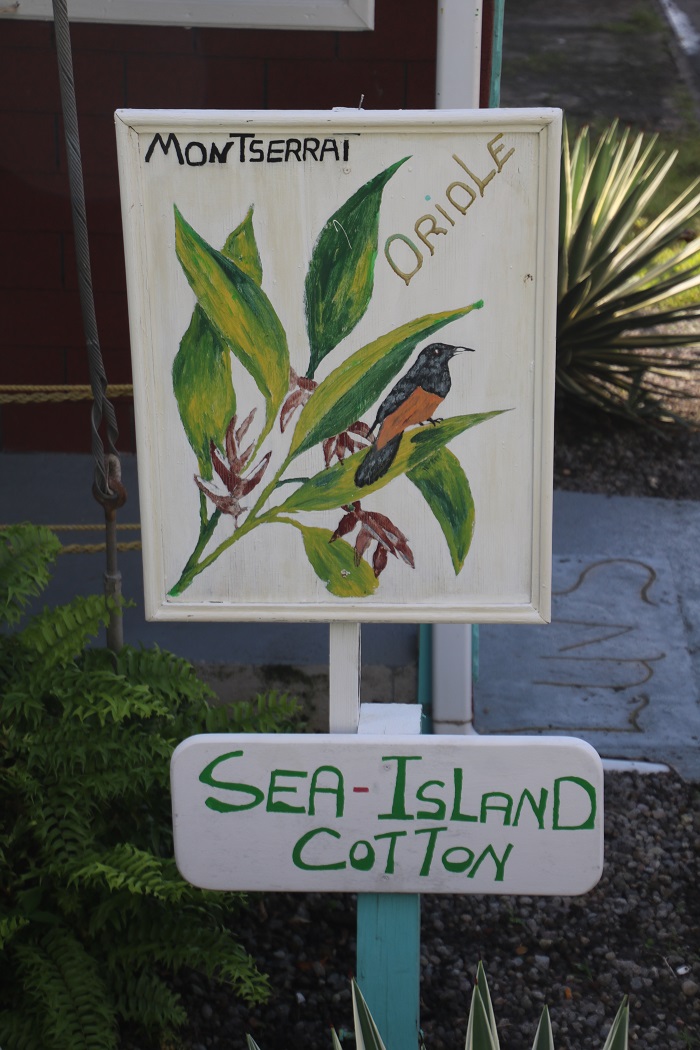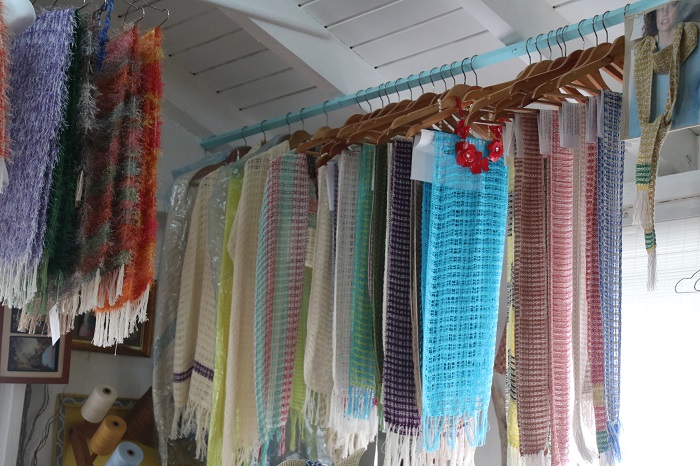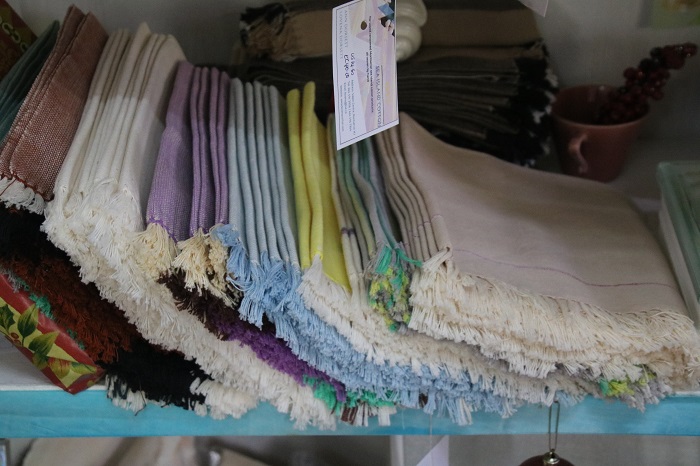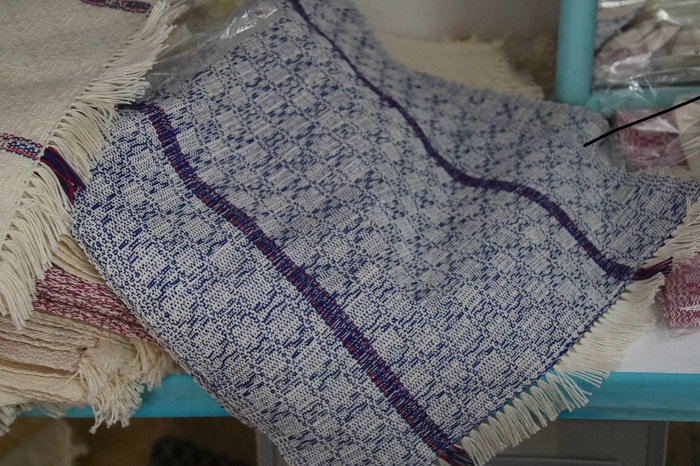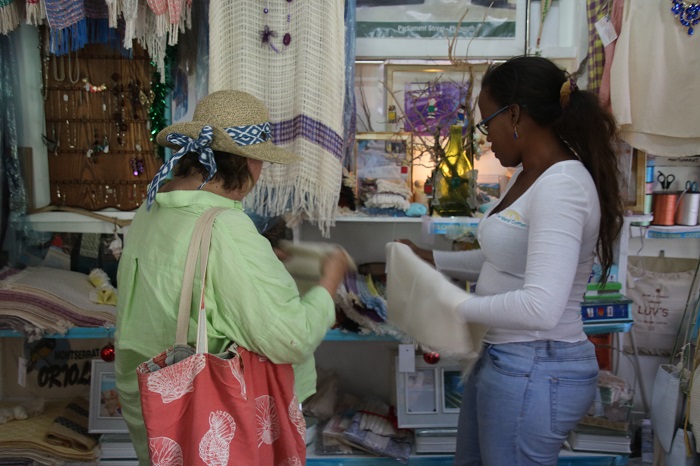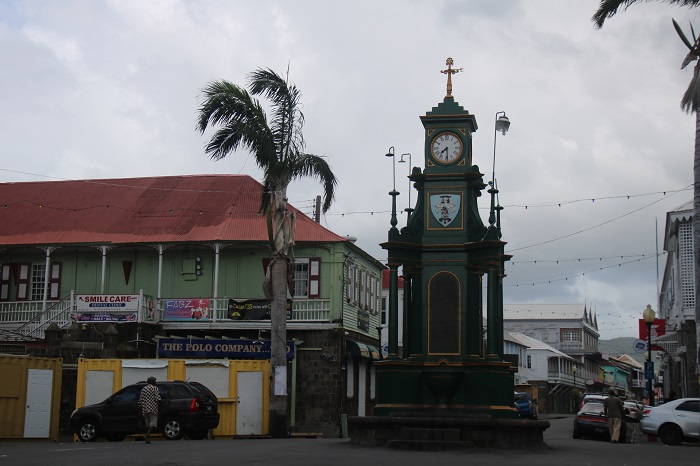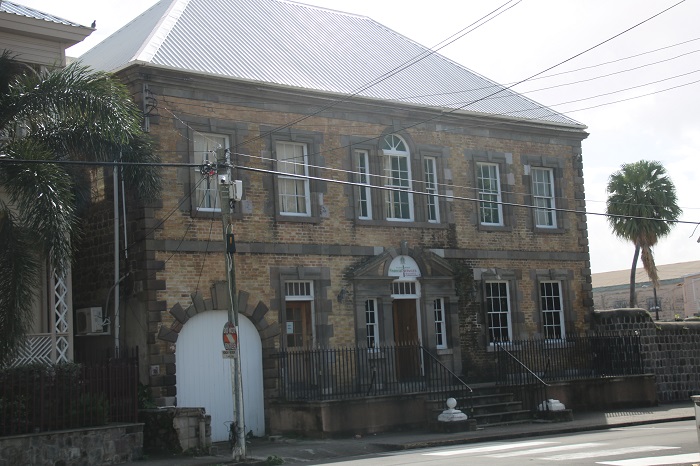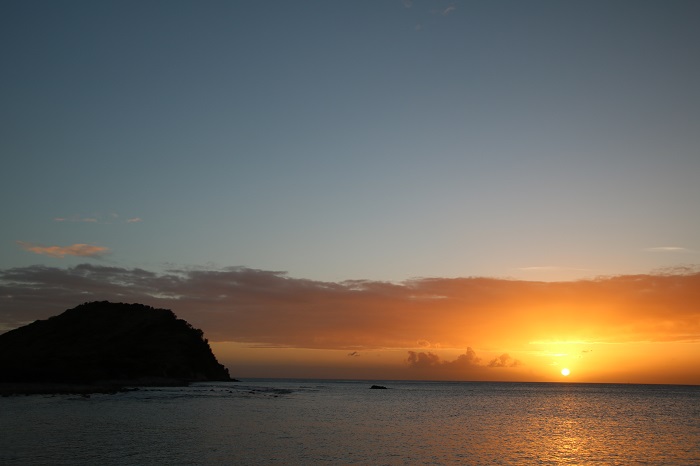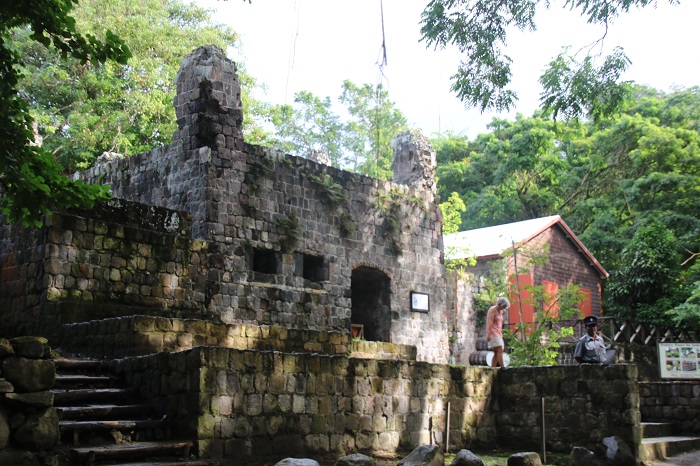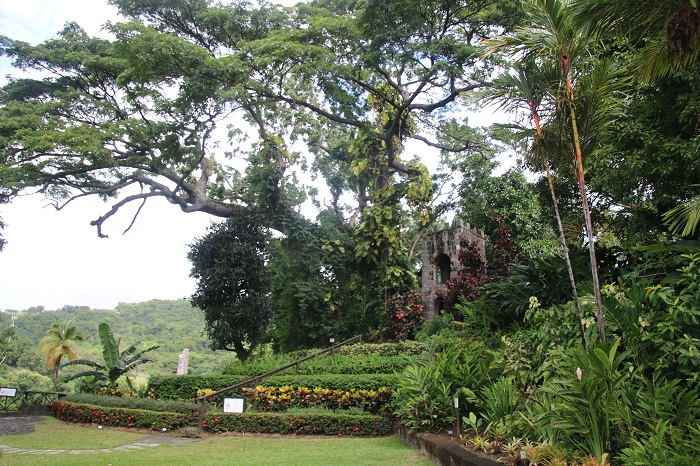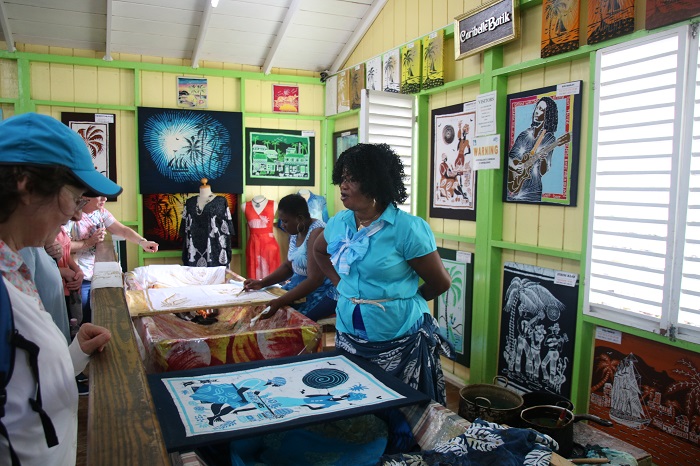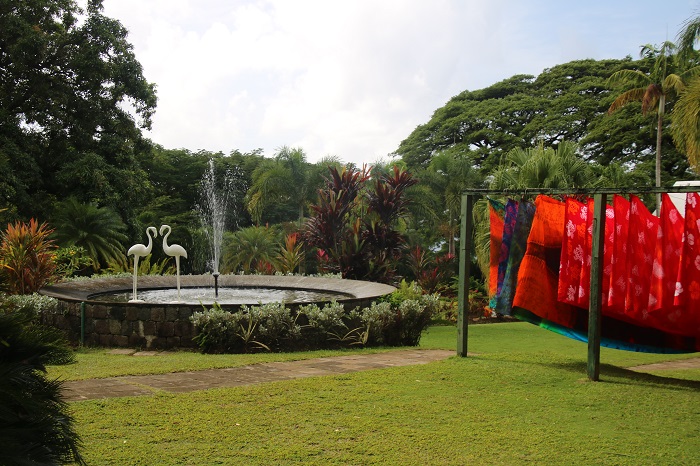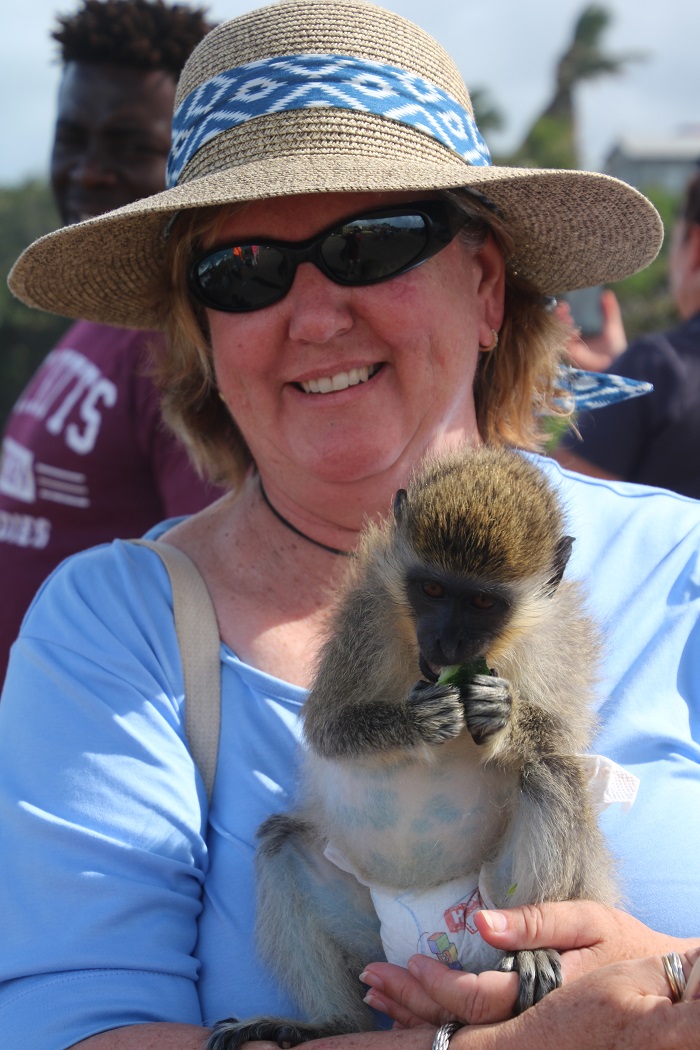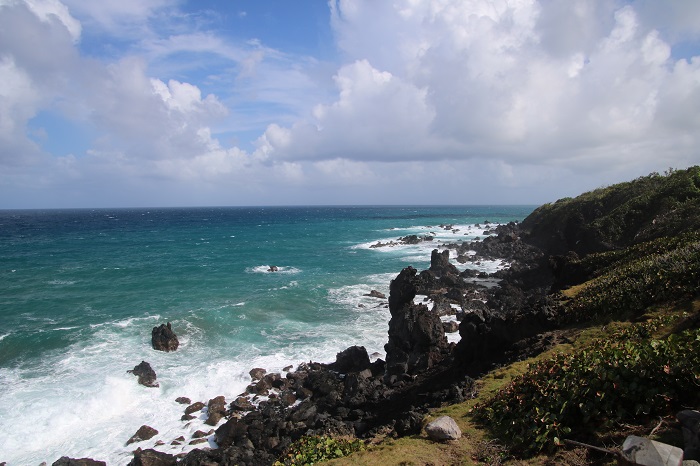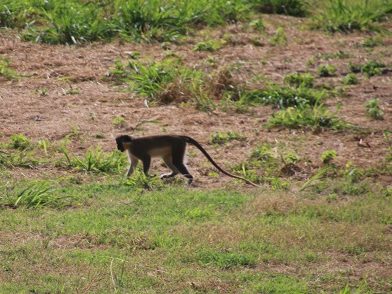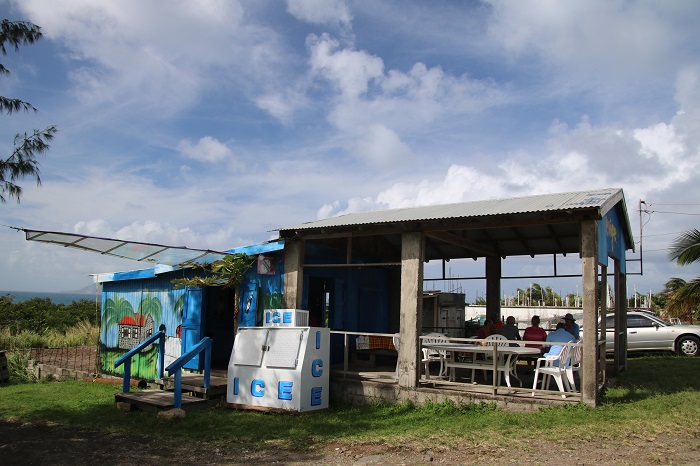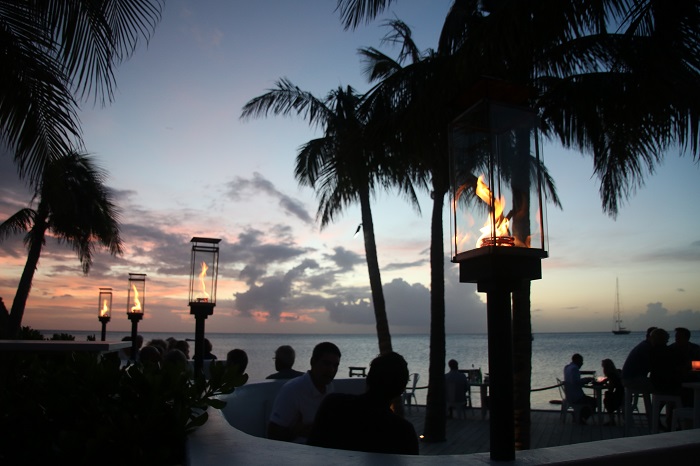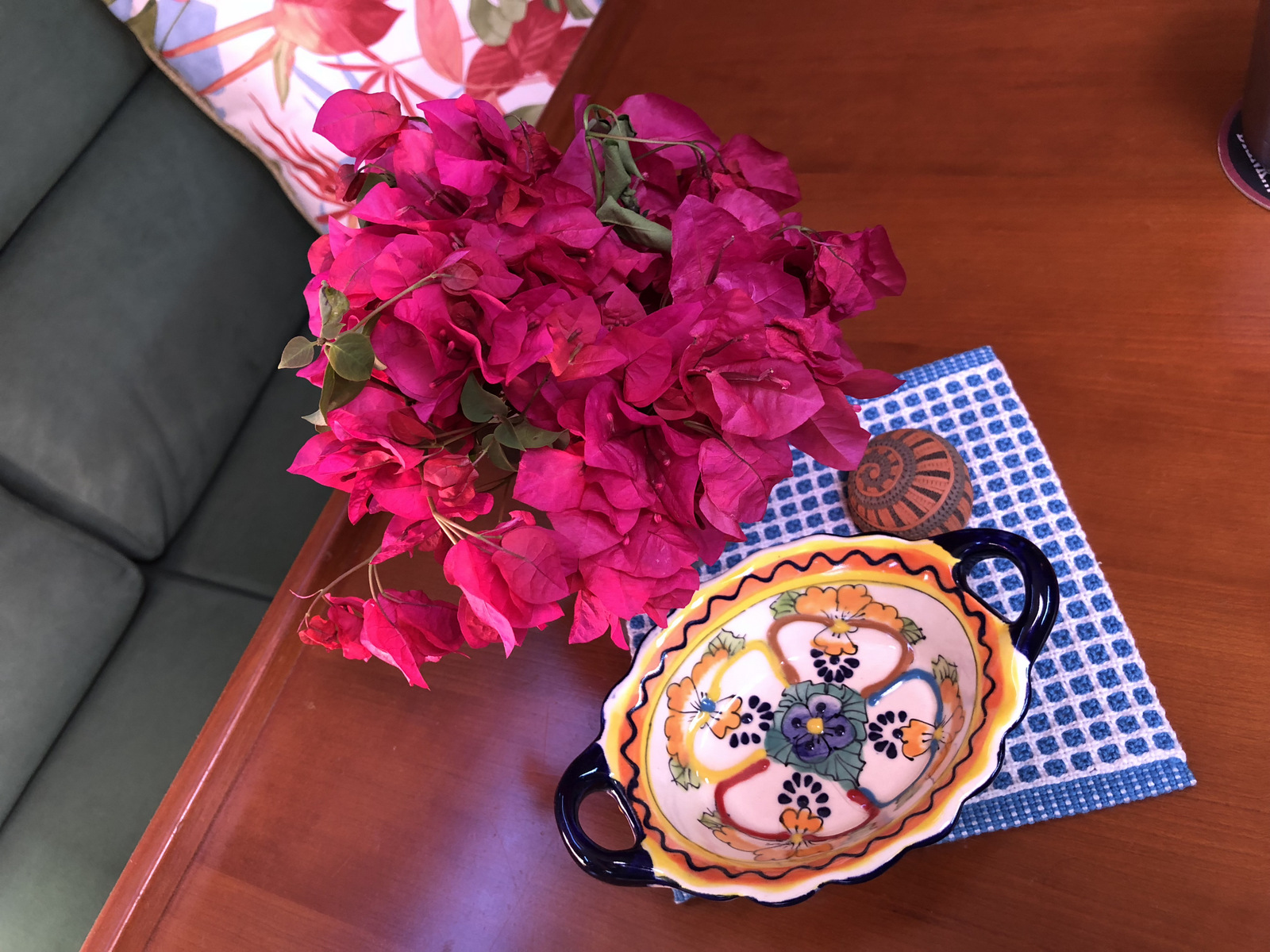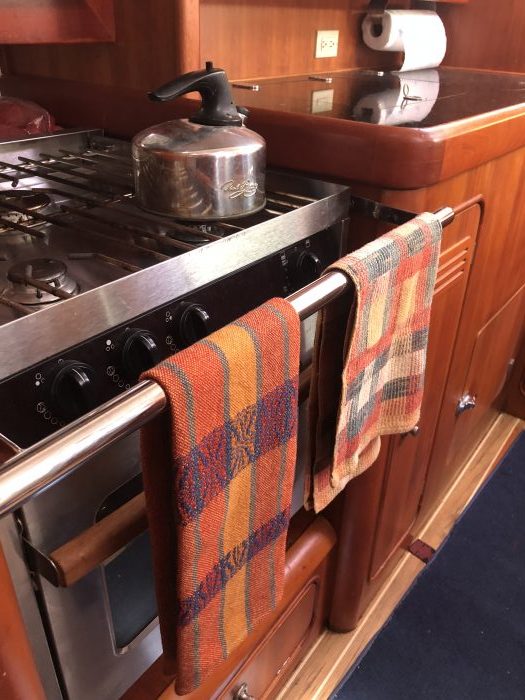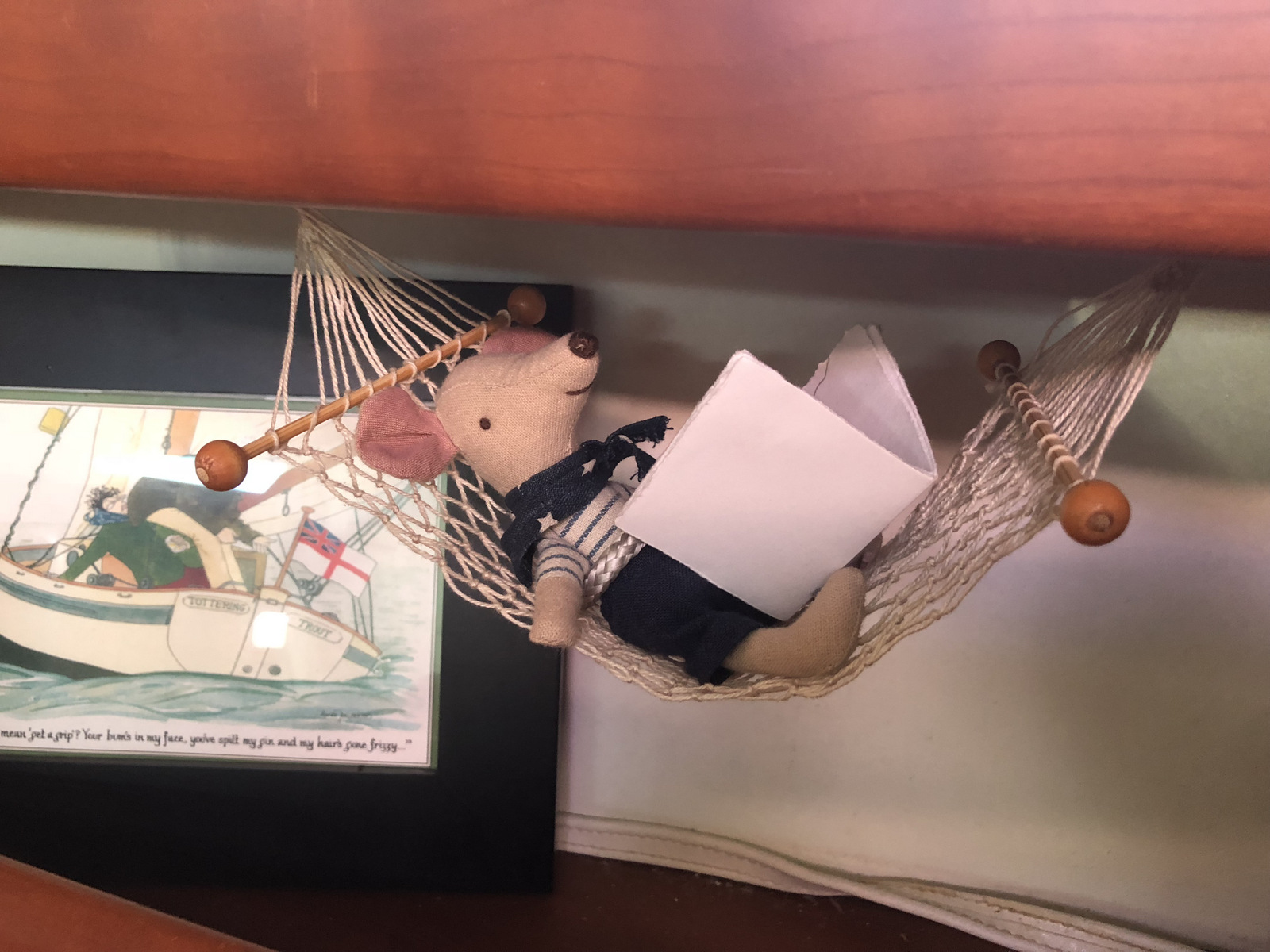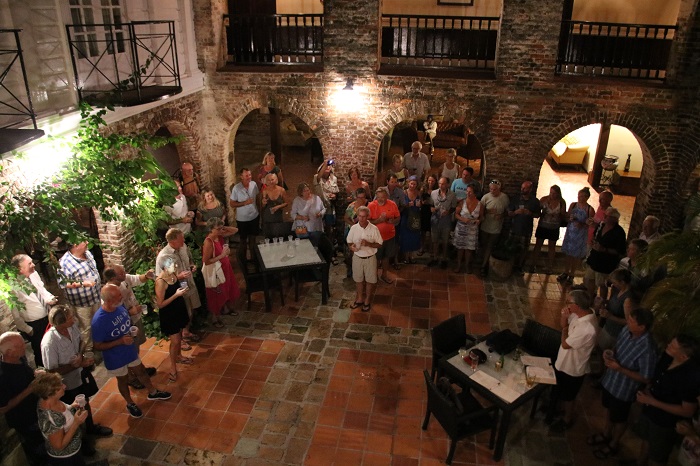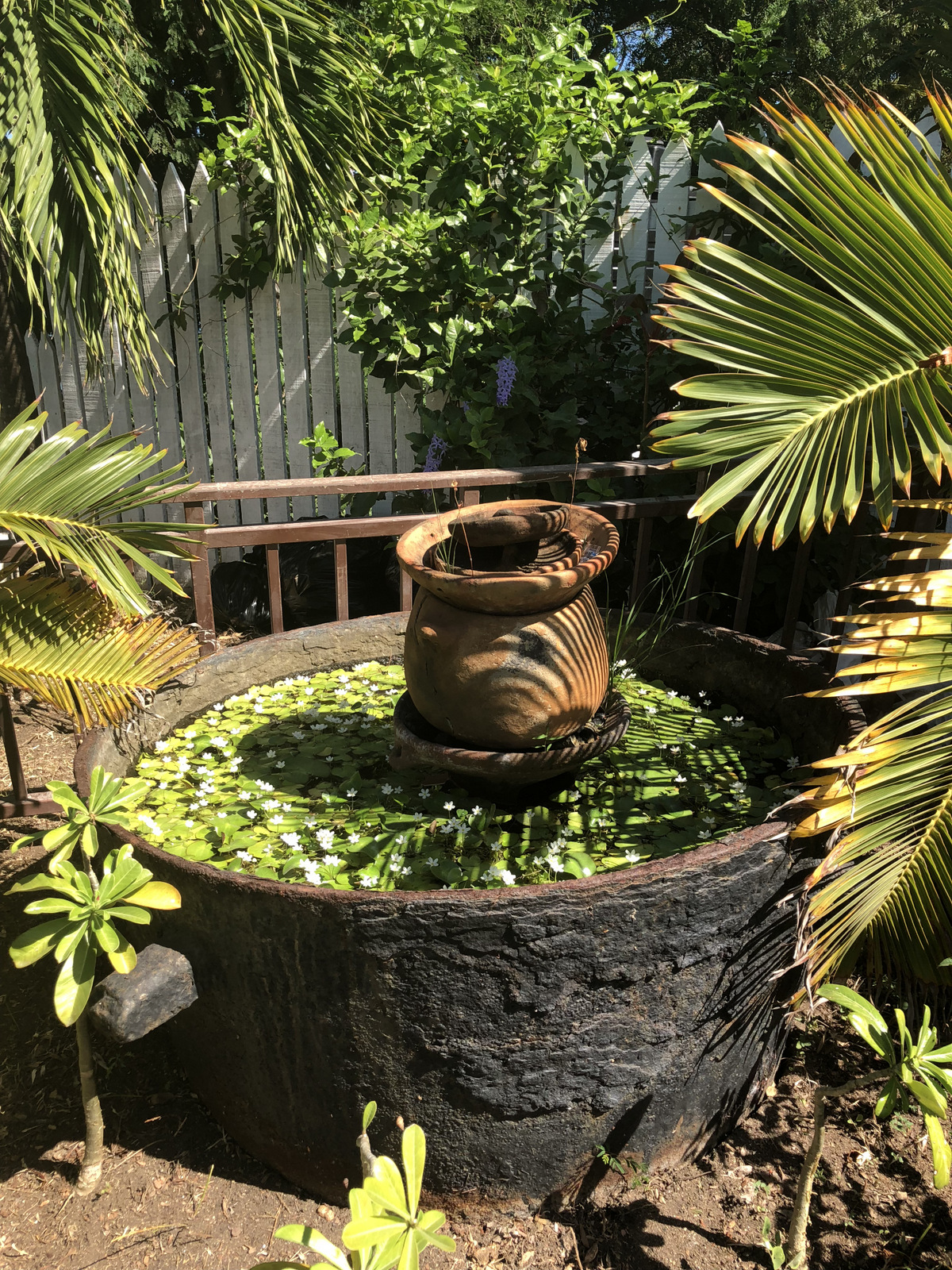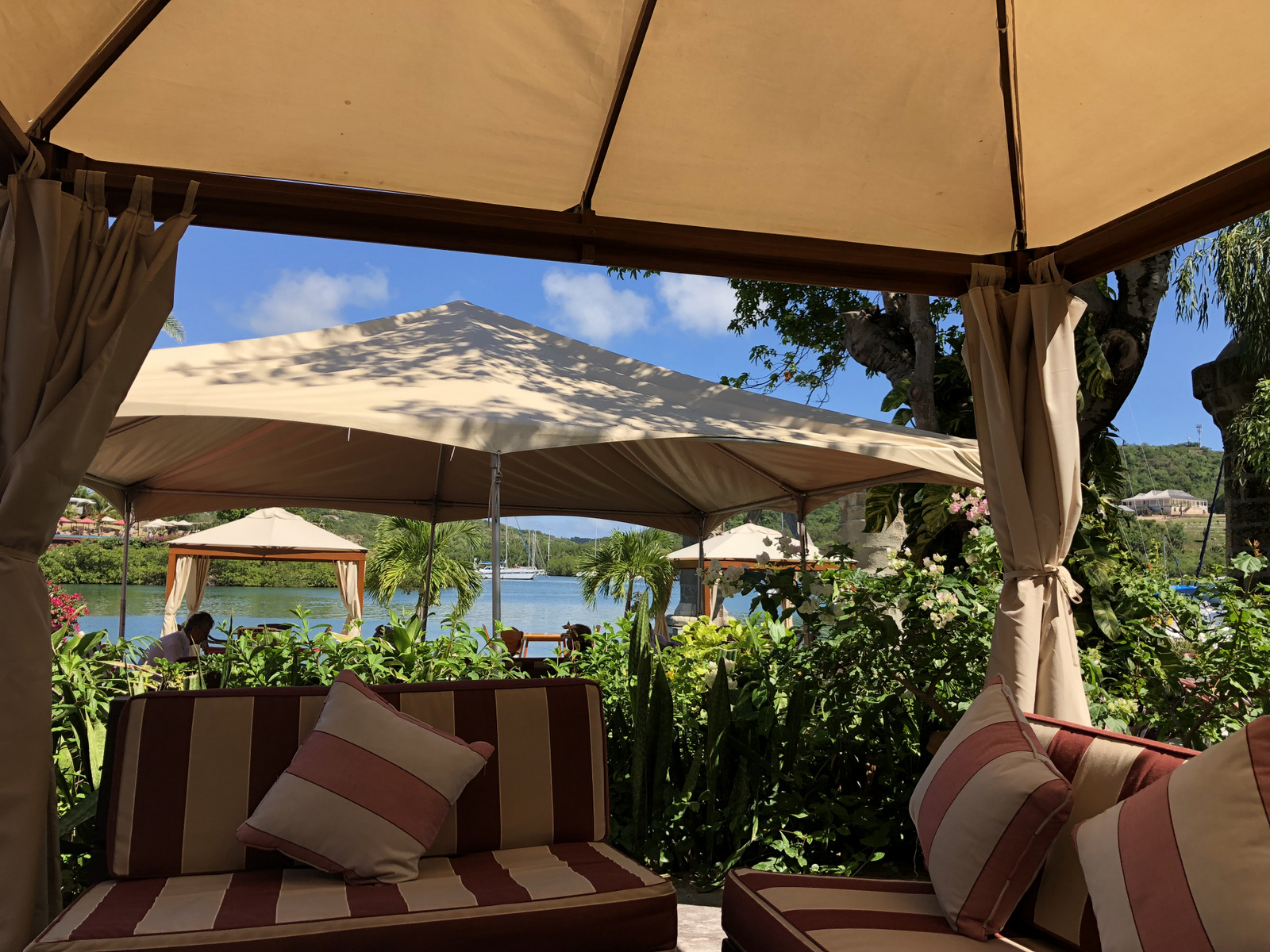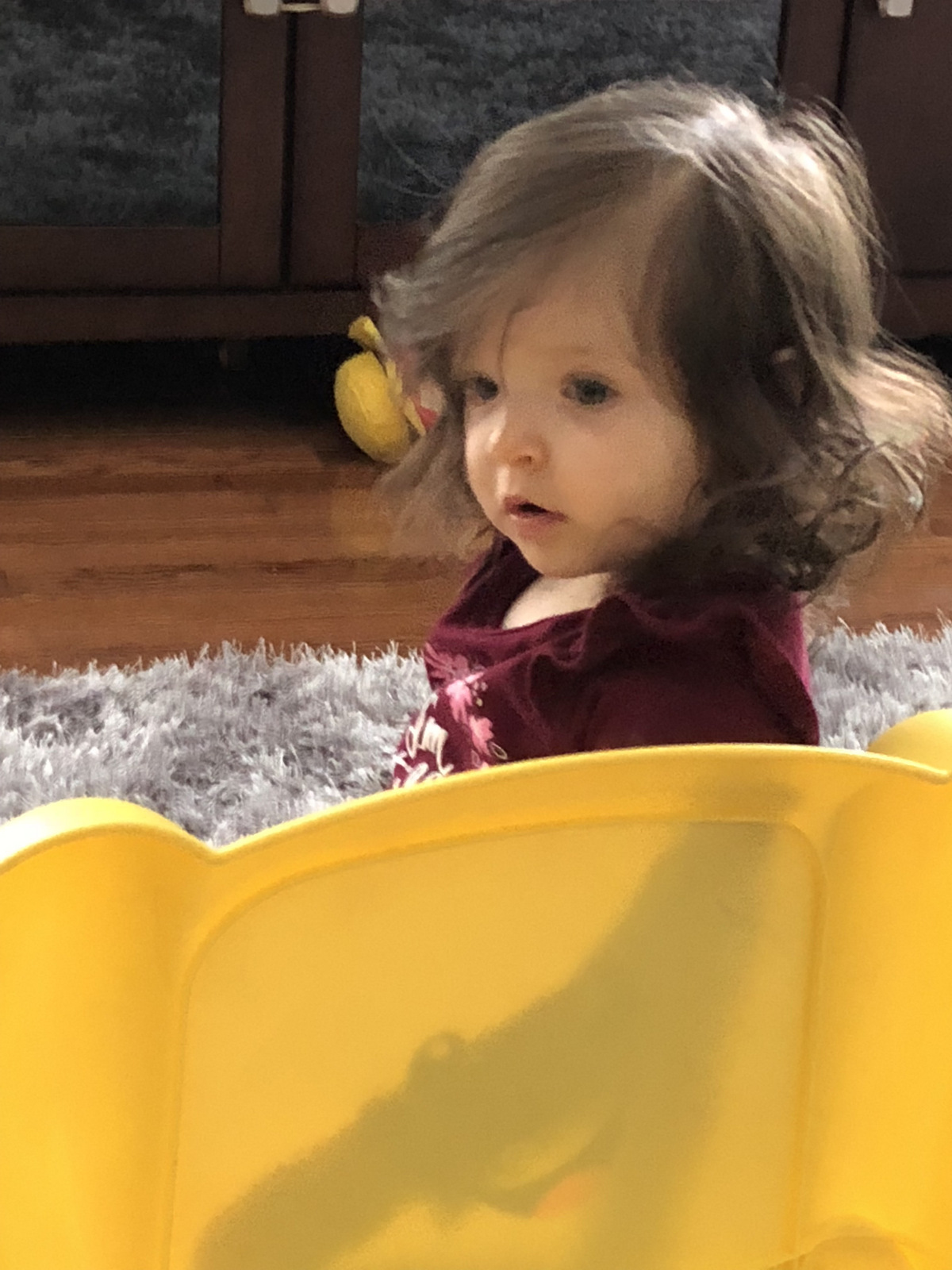It’s almost June, and I have been writing blogposts in my head for about two months. None of them has made it to reality here on this site. I am approaching the end of my 3 1/2 months at home before leaving to go back to Pandora in mid-June. It’s almost time to go again. Somehow, when I am living aboard it seems that several months at home will allow me to get a lot of things done. I envision myself weaving, knitting, creating every single day, but life always has other plans. Still, there has been a lot good over the past three months. In 10 days I’ll be on a plane heading to the Azores, where I will wait for Bob to arrive, unless he beats me there. There is a slight chance for that.
In spite of never accomplishing what I hope to do in any given period of time, I have experienced a tremendous amount of productivity and inspiration. I attended all the meetings I normally miss, and what an exceptional treat that was to be with so many other weavers who all have ideas worth noting. I now have a longer list of things I want to weave and knit, spin and sew. But before I can plan new projects I have to finish the ones currently on my looms, currently on my knitting needles.
This is the project I put on my Baby Wolf shortly after I returned home after taking a zoom class on double huck with Cally Booker in January, when I was aboard Pandora with no way to weave. It’s Finnish linen, single ply #8, which I think is about 2400 yards per pound. To start I set my warp at 33 epi, which is only 16 epi for each layer of the double weave. I wove two samples and washed them. I think they are both too loose.
Cally suggested I try 1/2 units of huck alternating with 1/2 units of plain weave before I decided to re-sley. It didn’t help.
I re-sleyed at 40 epi (20 for each layer), and I like what I’m getting now.
So I’m on the real project now, a cowl, with 3-4 colors in both layers of the warp, but only two colors in the weft. I may add more colors in the next cowls after this one. Of course, now I’ve decided that I want to take this with me on my summer travels. So the heat is on! I leave in 10 days.
And of course I wanted a new sweater to take with me for the windy, chilly Outer Hebrides that I’ll visit in July. I have now finished the 2nd sleeve and will sew it in later today. This is a design by Martin Storey called “Skylark,” for Rowan yarns. I bought this yarn years ago for a different sweater which called for two versions of Shibui yarns, “Fern” which is a soft organic cotton yarn, and “Twig” which is a fine linen yarn. That sweater required holding the yarns together, and of course that made it quite expensive. I thought it would look better in this design, even though this sweater “Skylark” calls for a wool yarn from Rowan. So of course this meant I was play a game of ‘yarn chicken’ which I detest doing! And I knew I was going to lose, which is why I decided to do the front bands in three strands of 16/2 linen from my weaving stash. You can see the front bands are a darker color. Then came the mistakes! Although it doesn’t show (to me) there are significant decreases after the cabled ribs at the bottom of the sweater. When I knit the right front (on the left in the photo) I forgot to do that! When I was almost finished with the shoulder shaping I realized that this part of the sweater was WAY bigger than the other front. I had to rip all the way back to the top of ribbing. Not fun, especially since it’s all stockinette stitch. Then came the next big mistake: I did not notice that I accidentally carried the front band yarn all the way across that second front until I was sewing the body pieces together. Can you imagine how frustrated I was when I realized I had another major mistake? I decided I could not face ripping back and knitting again–all that stockinette stitch. This unsightly stripe is on my right, and since I usually wear a cross body bag when I am out and about, the bag will hide most of this problem. If I get really inspired (unlikely) I could duplicate stitch with the darker yarn in various other places to continue the look. I often find that if I wear something before I consider it finished I never go back to do the embellishments I’ve planned. I am going to wear this sweater on Friday, complete with the cross body bag disguise. I’ll probably never do the duplicate stitch. It is what it is. And I won’t even mentioned that in spite of using a different yarn for the front bands, I had to go on long, deep internet search to find one more skein of “Fern” to make the 2nd sleeve. This sweater had its challenges.
A few weeks ago I found some beautiful linen fabric on Etsy. It is printed linen from Finland. I seem to be on a roll with materials from Finland. How could I resist this?
I made a simple top, except that at my level of skill that neckline was not so simple. I didn’t get the two sides of the V-neck the same, even though I re-did it three times. When I tried this on the first time I realized it needed darts, and I did manage to put those in after the fact. One point for me!
I decided to ‘decorate’ the neckline based on sage advice a weaver once gave me: If you can’t hide it, decorate it! I made some crocheted cord that is used in Romanian lace, but that only accentuated the uneven neckline. Then I tried some decorative edge embroidery, but that also drew more attention to the problem. Last ditch effort was to go through my vast scarf stash. Bingo! I found a scarf made of manipulated ribbon that I made in a workshop with Sally Shore, almost 2 decades ago! I have never had just the right top to wear this scarf, so I am thrilled that almost 20 years later it’s just the right accessory.
I no longer have any clue how we made these ribbon scarves. They were entertaining to make, and I don’t think it required as much sewing as it looks like it did.
In 10 days I leave to meet Bob in the Azores. He left home in late April and has been sailing ever since. He started in Trinidad, which is spitting distance from Venezuela, and stopped in St. Maarten and Bermuda. He got a change of crew at each stop. On May 31, he left Bermuda with two new crew members to head non-stop to the Azores. He hopes to get there by mid June, which will mean he’s been sailing for 6 weeks with no rest. He’s had technical problems and health problems along the way. He has mostly taken it all in stride, but I have not. I have to admit that I seriously thought we needed to rethink these plans. But he’s on his way, and the passage is going very well so far. The prep for this passage certainly didn’t.
I will fly to the Azores on June 15th, and just in case Bob hasn’t arrived, I have booked five days in what i hope is very comfortable hotel, right on the harbor, walking distance from a scrimshaw museum, a knitting store, and a fine craft gallery. I hope I find something wonderful to buy for Bob’s 70th birthday which is Sunday. We are missing being together on both our 48th anniversary and his landmark birthday. But he chose to do this trip so I know he’s doing what he loves.
In mid-July I will fly to Scotland to spend 2-3 weeks doing some very exciting things with a good friend whom I have traveled with numerous times. We travel well together and always have a good time. And this is when the abundance of good is going straight into the stratosphere. I have an appointment to see the tapestries that Archie Brennan’s family has given to the National Museum of Scotland. I believe they have in the neighborhood of 100 of Archie’s tapestries. They are in storage now, but I hope there will be an opportunity to display them. We all got cheated for his retrospective exhibition when it took place in July-August of 2021, when it wasn’t yet safe to travel. Maybe there is another chance for a big exhibition of his work.
After that I have an appointment to meet the current director of the Dovecot Studios. The last time I was in Scotland, and so looking forward to visiting the Dovecot, it was closed for renovations. Now is the time. I am so thankful. I’ve been asked to give a talk about Archie, so I am preparing for that, and yes, I am very nervous. The Dovecot is where Archie learned to weave, and where he established his career as a tapestry designer and weaver. He is a legend there. Here he is, age 16, in the center front, with the other weavers from that time. It is 1947 or ’48.

It’s going to be an exciting summer, full of an abundance of amazing opportunities. When I leave Edinburgh, my friend Kari and I will visit Stirling Castle to see the reproduction tapestries of the “Hunt for the Unicorn.” While I was studying with Archie and the Wednesday Group, we met the weavers from the UK, who visited the Met Cloisters in order to study the originals. Now I will get to see their finished pieces. And we’ll visit Galashiels to see the “Great Tapestry of Scotland” which is an embroidery on a vast scale, like the Bayeux Tapestry. As luck would have it, earlier this year I met three women who either worked on this monumental piece or are related to someone who did. What serendipty. Then we’ll head to the West Coast to do a sightseeing excursion through the Outer Hebrides. I’ve got a few mills and other textile places on my ‘must see’ list. I have to wonder if I’ll ever have such a textile rich trip again. It’s an abundance of good.












